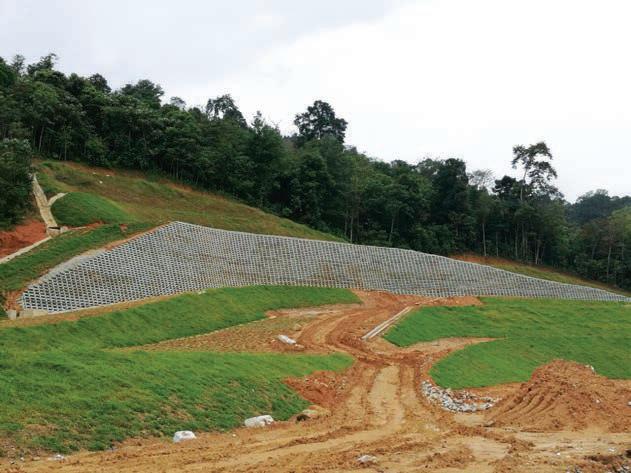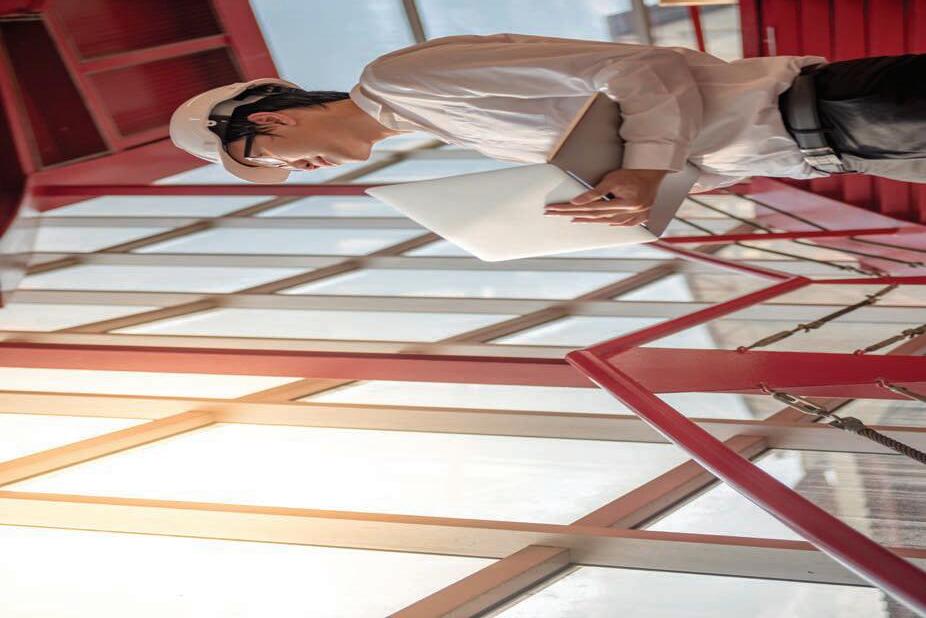


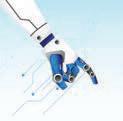


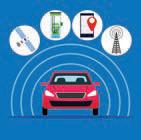



































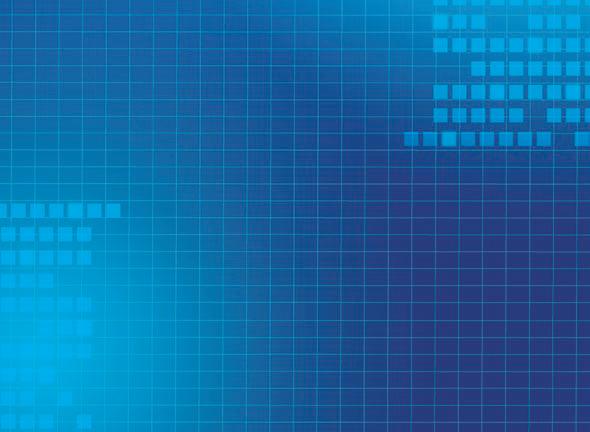
Standards and 4.0 Industry












































Standards and 4.0 Industry

JURUTERA has an estimated readership of 198,000 professionals. Our esteemed readership consists of certified engineers, decision making corporate leaders, CEOs, government officials, project directors, entrepreneurs, project consultants, engineering consulting firms and companies involved with engineering products and services.
Our business partners can be assured that their products and services will be given the circulation and exposure they deserve, thus maintaining a sustained advertising presence to our core readers of decision-making engineers and technical experts. Our website offers an even wider market reach, with added international presence, aided by our international affiliation with official engineering bodies all over the world. Our online and offline advertising features such as banner advertising, article sponsorship and direct e-mail announcements have proven to be successful marketing strategies that will set the businesses of our partners apart from their competition.
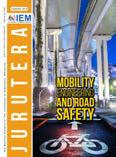
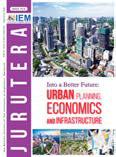

For advertising enquiries, please contact:













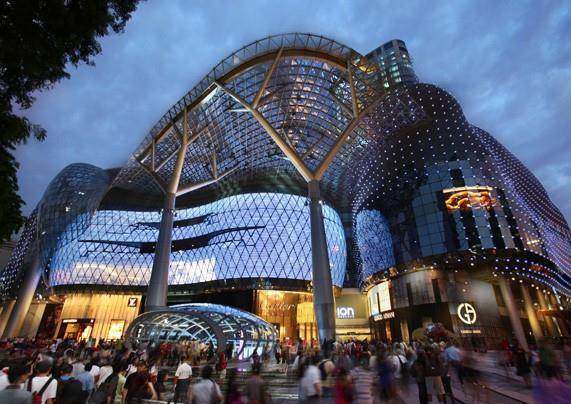
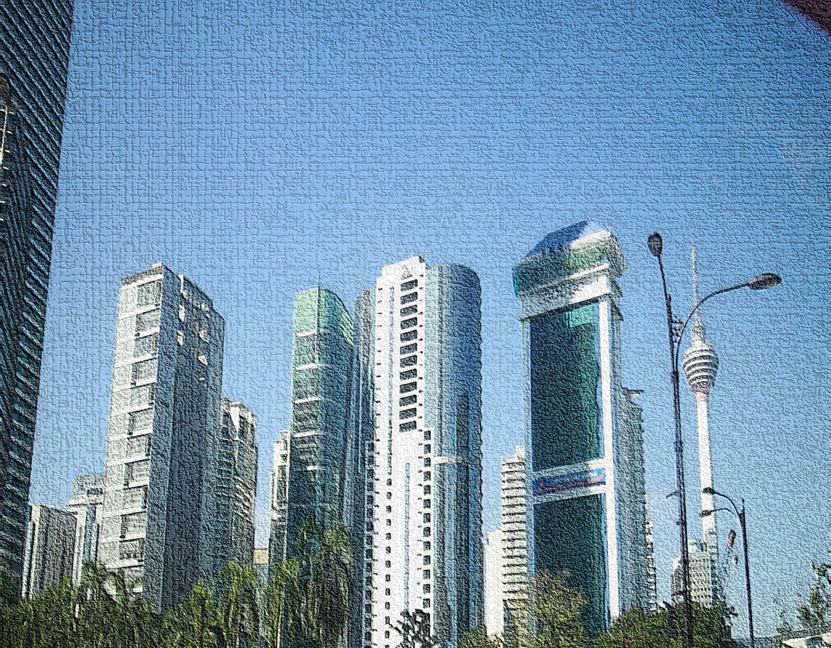



High adaptability to wind conditions featuring low-speed startup

High power-conversion efficiency – 16% to 24% – with mono-Si solar panels

Intelligent power-balancing system

High energy density with rechargeable batteries

Multiple output voltages

HIKVISION (MALAYSIA) SDN. BHD.
301, Level 3 of Menara LGB , No. 16 Jalan Wan Kadir, Taman Tun Dr. Ismail, 60000 Kuala Lumpur
T +60327224000
F +60327224022
Sales Email: sales.my@hikvision.com


JULY 2019IEM Registered on 1 May 1959
MAJLIS BAGI SESI 2019/2020 (IEM COUNCIL SESSION 2019/2020)
YANG DIPERTUA / PRESIDENT
Ir. David Lai Kong Phooi
TIMBALAN YANG DIPERTUA / DEPUTY PRESIDENT
Ir. Ong Ching Loon
NAIB YANG DIPERTUA / VICE PRESIDENTS
Ir. Prof. Dr Norlida bt Buniyamin, Ir. Prof. Dr Jeffrey Chiang Choong Luin, Ir. Ellias bin Saidin, Y.Bhg. First Admiral Dato’ Ir. Ahmad Murad bin Omar, Ir. Dr Tan Chee Fai, Ir. Mohd Aman
bin Hj. Idris, Ir. Dr Wang Hong Kok
SETIAUSAHA KEHORMAT / HONORARY SECRETARY
Ir. Mohd Khir bin Muhammad
BENDAHARI KEHORMAT / HONORARY TREASURER
Ir. Chen Harn Shean
BEKAS YANG DIPERTUA TERAKHIR / IMMEDIATE PAST PRESIDENT
Ir. Dr Tan Yean Chin
BEKAS YANG DIPERTUA / PAST PRESIDENTS
Y.Bhg. Academician Tan Sri Datuk Ir. (Dr) Hj. Ahmad Zaidee bin Laidin, Y.Bhg. Dato’ Ir. Dr
Gue See Sew, Y.Bhg. Dato’ Paduka Ir. Hj. Keizrul bin Abdullah, Y.Bhg. Academician Dato’ Ir.
Prof. Dr Chuah Hean Teik, Ir. Choo Kok Beng, Y.Bhg. Dato’ Ir. Lim Chow Hock
WAKIL AWAM / CIVIL REPRESENTATIVE
Ir. Dr Lee Yun Fook
WAKIL MEKANIKAL / MECHANICAL REPRESENTATIVE
Ir. Fam Yew Hin
WAKIL ELEKTRIK / ELECTRICAL REPRESENTATIVE
Ir. Lim Kim Ten
WAKIL STRUKTUR / STRUCTURAL REPRESENTATIVE
Ir. Dr Ng Soon Ching
WAKIL KIMIA / CHEMICAL REPRESENTATIVE
Ir. Prof. Dr Lee Tin Sin
WAKIL LAIN-LAIN DISPLIN / REPRESENTATIVE TO OTHER DISCIPLINES
Ir. Dr Bhuvendhraa Rudrusamy
WAKIL MULTIMEDIA DAN ICT / ICT AND MULTIMEDIA REPRESENTATIVE
Ir. Dr David Chuah Joon Huang
WAKIL JURUTERA WANITA / WOMAN ENGINEERS REPRESENTATIVE
Ir. Rusnida bt Talib
AHLI MAJLIS / COUNCIL MEMBERS
Ir. Dr Leong Wai Yie, Ir. Razmahwata Mohd Razalli, Ir. Abdul Razak Yakob, Ir. Yau Chau Fong, Y.Bhg. Dato’ Ir. Foong Choy Chye, Y.Bhg. Dato’ Ir. Kisai bin Rahmat, Y.Bhg. Dato’ Ir. Nor Hisham Mohd Ghazali, Ir. Toh Chin Kok, Ir. Dr Jeyanthi Ramasamy, Ir. Yim Hon Wa, Ir. Yam Teong Sian, Y.Bhg. Dato’ Ir. Fakharazi bin Wahijan, Ir. Yasotha Ramachandran Chetty, Ir. Mohmad Asari bin Daud, Ir. Ng Beng Hooi, Ir. Dr Lai Khin Wee, Ir. Prof. Dr Ruslan bin Hassan, Ir. Mah Siew Kien, Y.Bhg. Dato’ Ir. Mohd Azmi bin Ismail, Ir. Ng Yong Kong, Ir. Dr Mui Kai Yin, Y.Bhg. Dato’ Ir. Noor Azmi bin Jaafar, Ir. Ting Chek Choon, Ir. Sukhairul Nizam bin Abd Razak, Ir. Lai Sze Ching, Y.Bhg. Dato’ Ir. Dr Ahmad Anuar bin Othman, Y.Bhg. Dato’ Ir. (Dr) Andy Seo Kian Haw WAKIL BAHAGIAN JURUTERA SISWAZAH / YOUNG ENGINEERS SECTION REPRESENTATIVES
Dr Yew Weng Kean, Mr. Addison Koh Yang Mun, Mr. Tony Ong Chong Yong, Mr. Kuugan Thangarajoo, Sdr. Cheah Khai Chun PENGERUSI CAWANGAN / BRANCH CHAIRMAN
1. Pulau Pinang: Ir. Yau Ann Nian
2. Selatan: Ir. Teo Ki Yuee
3. Perak: Ir. Simon Yeong Chin Chow
4. Kedah-Perlis: Ir. Haji Abdullah bin Othman
5. Negeri Sembilan: Ir. Dr Oh Seong Por
6. Kelantan: Ir. Abrizan bin Abdul Kadir
7. Terengganu: Ir. Abdullah Zawawi bin Haji Mohamad Noor
8. Melaka: Ir. Sreedaran a/l Raman
9. Sarawak: Ir. Haidel Heli
10. Sabah: Ir. James Yong Hon Min
11. Miri: Ir. Dr Lau Hieng Ho
12. Pahang: Y.Bhg. Dato’ Ir. Sharuddin bin Mohd Simin
AHLI JAWATANKUASA INFORMASI DAN PENERBITAN/ STANDING COMMITTEE ON INFORMATION AND PUBLICATIONS 2019/2020
Pengerusi/Chairman: Ir. Dr Wang Hong Kok
Naib Pengerusi/Vice Chairman: Ir. Dr David Chuah Joon Huang Setiausaha/Secretary: Ir. Lau Tai Onn
Ketua Pengarang/Chief Editor: Ir. Dr Wang Hong Kok Pengarang Bulletin/Bulletin Editor: Ir. Abdul Razak Yakob Pengarang Prinsipal Jurnal/Principal Journal Editor: Ir. Dr David Chuah Joon Huang Pengerusi Perpustakaan/Library Chairman: Ir. C.M.M. Aboobucker
Ahli-Ahli/Committee Members: Ir. Ong Guan Hock, Ir. Yee Thien Seng, Ir. Chin Mee Poon, Ir. Dr Oh Seong Por, Ms. Michelle Lau Chui Chui, Ir. Prof. Dr Abdul Aziz bin Abdul Samad, Ir. Razmahwata bin Mohd Razalli, Y.Bhg. Dato’ Ir. Nor Hisham Mohd Ghazali, Ir. Yasotha Ramachandran Chetty, Dr Sudharshan N. Raman, Ir. Dr Bhuvendhraa Rudrusamy, Ir. Hasril bin Hasini
LEMBAGA PENGARANG/EDITORIAL BOARD 2019/2020
Ketua Pengarang/Chief Editor: Ir. Dr Wang Hong Kok Pengarang Bulletin/Bulletin Editor: Ir. Abdul Razak Yakob Pengarang Prinsipal Jurnal/Principal Journal Editor: Ir. Dr David Chuah Joon Huang Ahli-ahli/Committee Members: Ir. Lau Tai Onn, Ir. Ong Guan Hock, Ir. Yee Thien Seng, Ms. Michelle Lau Chui Chui, Ir. Dr Oh Seong Por, Ir. Yasotha Ramachandran Chetty, Dr Sudharshan N. Raman, Ir. Dr Bhuvendhraa Rudrusamy, Ir. Razmahwata bin Mohd Razalli
Secretariat: Janet Lim, May Lee
INSTITUTION OF ENGINEERS, MALAYSIA Bangunan Ingenieur, Lots 60 & 62, Jalan 52/4, P.O. Box 223, (Jalan Sultan), 46720 Petaling Jaya, Selangor Darul Ehsan. Tel: 603-7968 4001/4002 Fax: 603-7957 7678 E-mail: sec@iem.org.my Homepage: http://www.myiem.org.my

STORY MalaysiaontherightpathwithIndustry4WRD
ARTICLES StandardsDriveGlobalValueChainsJoiningForceswithStandardsMalaysiaand SuruhanjayaTenaga............................................12
IEC:ShapingtheFutureofGlobal StandardisationandConformityAssessment& theWayForwardforIndustry4.0........................16
JPSHydrologicalProcedures:AnUpdate............22
Industry4.0-OurNationalPolicy........................30 IndustrialDigitalisation.........................................33 TransformingYourFactoryintoaSmartFactory:
FROM BRANCH RegionalSewageTreatmentPlant -KualaSawah
PINK PAGE
Publisher:
Explore our full set of Professional and Integrated PUBLISHING MANAGEMENT SERVICES:
» Project Management
» Crea�ve Management
» Ad Space Management
» Mailing Management
» Print Management
• Annual Reports
• Booklets • Brochures
• Bun�ngs • Business Cards
• CD / DVD Replica�ons
• Calendars • Cards & Invita�ons
• Cer�ficates • Custom Prin�ngs
• Envelopes • Folders
• NCR Bill Books • Notepads
• Leaflets • Le�erheads

• Paper Bags • Posters Others












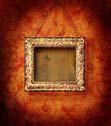
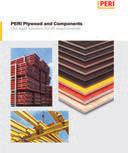






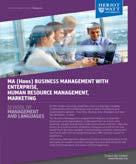
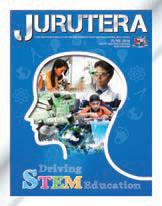

















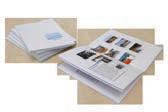
Publishing Sdn Bhd (449732-T) Level 18-01-02, PJX-HM Shah Tower, No. 16A, Persiaran Barat, 46050 Petaling Jaya, Selangor Darul Ehsan, Malaysia.
DIMENSION PUBLISHING SDN. BHD. (449732-T)
Level 18-01-02, PJX-HM Shah Tower, No. 16A, Persiaran Barat, 46050 Petaling Jaya, Selangor Darul Ehsan, Malaysia. Tel: +(603) 7493 1049 Fax: +(603) 7493 1047
E-mail: info@dimensionpublishing.com Website: www.dimensionpublishing.com
ROBERT MEBRUER
PATRICK LEUNG
SHIRLEY THAM shirley@dimensionpublishing.com
JOSEPH HOW joseph@dimensionpublishing.com
TAN BEE HONG bee@dimensionpublishing.com
PUTRI ZANINA & LAURA LEE putri@dimensionpublishing.com laura@dimensionpublishing.com
SUMATHI MANOKARAN sumathi@dimensionpublishing.com
NABEELA AHMAD beela@dimensionpublishing.com
THAM CHOON KIT ckit@dimensionpublishing.com YEN YIN
yenyin@dimensionpublishing.com
For advertisement placements and subscriptions, please contact: DIMENSION PUBLISHING SDN. BHD. (449732-T) Level 18-01-02, PJX-HM Shah Tower, No.16A, Persiaran Barat, 46050 Petaling Jaya, Selangor Darul Ehsan, Malaysia. Tel: +(603) 7493 1049 Fax: +(603) 7493 1047
E-mail: info@dimensionpublishing.com
Subscription Department E-mail: info@dimensionpublishing.com
Printed by
PERCETAKAN SKYLINE SDN. BHD. (135134-V) No. 35 - 37, Jalan 12/32B, TSI Business Industrial Park, Off Jalan Kepong, 52100 Kuala Lumpur. Mailer
SM UNIQUE MAILING SERVICES SDN. BHD. (44277-W) 80, Jalan Nadchatiram Satu, Taman Taynton View, Cheras, 56000 Kuala Lumpur, Malaysia. Tel: +(603) 9132 9192
JURUTERA MONTHLY CIRCULATION: 22,500 COPIES
Submission or placement of articles in JURUTERA could be made to the:Chief Editor THE INSTITUTION OF ENGINEERS, MALAYSIA (IEM) Bangunan Ingenieur, Lots 60 & 62, Jalan 52/4, P.O. Box 223 (Jalan Sultan), 46720 Petaling Jaya, Selangor. Tel: +(603) 7968 4001/4002 Fax: +(603) 7957 7678 E-mail: pub@iem.org.my or sec@iem.org.my IEM Website: http://www.myiem.org.my
© 2019, The Institution of Engineers, Malaysia (IEM) and Dimension Publishing Sdn. Bhd.
PUBLICATION DISCLAIMER
The publication has been compiled by both IEM and Dimension with great care and they disclaim any duty to investigate any products, process, services, designs and the like which may be described in this publication. The appearance of any information in this publication does not necessarily constitute endorsement by IEM and Dimension. There is no guarantee that the information in this publication is free from errors. IEM and Dimension do not necessarily agree with the statement or the opinion expresssed in this publication.
COPYRIGHT
JURUTERA Bulletin of IEM is the official magazine of The Institution of Engineers, Malaysia (IEM) and is published by Dimension Publishing Sdn. Bhd. The Institution and the Publisher retain the copyright over all materials published in the magazine.
No part of this magazine may be reproduced and transmitted in any form or stored in any retrieval system of any nature without the prior written permission of IEM and the Publisher.

lobally,theindustrialsectorisundergoingtransformationandthe fourthwaveofindustrialrevolution.Oflate,wehavebeenhearing a lot about the term Industry 4.0. What exactly is Industry 4.0? Industrial Revolution 4.0? 4IR? Are they the same? Or is there any subtle difference? Maybe these questions are not burning enough.Perhaps we should ask how Industry 4.0 will impact industries in Malaysia? What are the policies in place to catalyse Industry 4.0 in our country?
Additionally,the role of standards in Industry 4.0 cannot be disputed. Among others, standards will lower uncertainty and guesswork while increasing productivity, ensuring quality and raising employee morale. Standards can also drive global value chains.So,what can engineers do to bring our productivity and competitiveness to the next level? Please read on to find out more!
As always, IEM EETD has organised talks, seminars and symposiums on the theme of this July 2019 issue. We have purposefully pieced together articles and reports which are consistent with the theme.With these,I hope you will have a clearer picture of how we can all play a role to drive Industry 4.0 and bring our country to the next level.Stay with us as we will be organising more activities for the benefit of IEM members.
Salam & Hello All IEMers,

Iambackforanotherterm.Sometimesyoumakesacrificesforthethings you care about. We all care about IEM, that’s why you are reading this right now. That is why you’re taking the time to read JURUTERA Being part of an organisation that strives for unity and inclusiveness like IEM, makes you feel you are part of a bigger cause that supports the development of our country.
This month, Electrical Engineering Technical Division (EETD) presents Standards & Industry 4.0.There is so much you can learn from this issue. I learnt about the difference between Industrial Revolution 4.0 and Industry 4.0.
Go to our website to learn about upcoming activities. For example, there is an Engineering Competency Development Engagement session for IEM mentors and mentees on 13 July, 2019.The monthly Professional Interview talks are also on-going. We’ve got a poster this month. All the sessions are made for you, the members. We urge you to come to these sessions.You can come more than once. Come and share your experience or provide comments for the betterment of the programmes. We needYOU!
Next month is the Engineering Week.The Engineer’s Run on 4 August, 2019, will be the biggest run ever. This year, YES (Young Engineers Section) is targeting to bring in the biggest crowd ever. See how many “ever”I used;so don’t you EVER miss this event.
Let’s continue to engineer our country to greater heights!
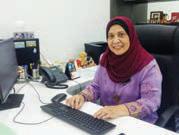
THE DIFFERENCE BETWEEN INDUSTRIAL REVOLUTION 4.0 AND INDUSTRY 4.0
Technology and industry have always gone hand-in-hand.The terms Industrial Revolution 4.0 (4IR) and Industry 4.0 have been catchphrases in the technological and industrial worlds for a while now and, for those in the know, this is a very exciting time to be involved in manufacturing and industries. The birth of new technologies will eventually revolutionise our lives and lead to a future which holds the certainty of accelerated disruption.
Y.Bhg. Datuk Fadilah Baharin is Director General for the Department of Standards Malaysia. One of the nation’s earliest scientists, she was made a Fellow of the Science Academy of Malaysia in 2013, and was also the first woman to represent Malaysia at the High Council of the International Organisation for Standardisation.She received the Tokoh Maulidur Rasul Award from the Yang di-Pertuan Agong in 2016 and the Darjah Pangkuan Seri Melaka (D.P.S.M.) award. She holds a Bachelor of Science (Honours) in Health & Environmental Physics (with focus on radiation protection) from the University of Salford, United Kingdom.
The first industrial revolution occurred in Europe in the 17th and 18th centuries; it began with the mechanisation of transportation and productions through water and steam power. The second revolution spread to the United States, with the advent of mass production and assembly lines in factories taking advantage of electricity. Agricultural societies became more industrialised and urban and inventions such as the transcontinental railroad, the cotton gin, electricity and other inventions changed society permanently. The third revolution began with
the adoption of computers and mechanisation. The current evolution is so significant that it is being called 4IR to signify the fourth revolution that is transpiring in manufacturing.
The 4th Industrial Revolution (4IR) refers to the developmental process in the management of manufacturing and chain production. It takes what began in the third revolution and boosts it with smart and independent systems supported by data and device learning. It is characterised by a fusion of technologies that are blurring the lines between the physical, digital and biological spheres.There is
an astounding convergence of emerging technology breakthroughs such as robotics, artificial intelligence, nanotechnology, quantum computing, biotechnology, materials science, energy storage, Internet of Things (IoT), Industrial Internet of Things (IIoT), decentralised consensus, fifth-generation wireless technologies (5G), additive manufacturing/3D printing and fully autonomous vehicles. It has its own technical standards to be adhered to.
What then is Industry 4.0?
Industry 4.0 is the technology that has and is being created as a result of following those standards. Industry 4.0 is the digitalisation transformation of production or manufacturing based industries, driven by connected technologies.

Industry 4.0 introduces what is referred to as“smart factory” in which cyber physical systems monitor real time physical progress of the factory and are able to make decentralised decisions. Other terminology includes Smart Manufacturing. Some regard Industry 4.0 as a subset of the 4th Industrial Revolution.
https://theaseanpost.com/article/malaysia-launches-industry-40-policy
years.The government targets a 5.1% average growth in the manufacturing sector between 2016 and 2020 as compared to an average of 4.8% in the five years preceding 2016.
The public,in particular engineers, are keen to understand the role they will play and how they can leverage on the new technology.
Prime Minister Tun Dr Mahathir Mohamad launched the country’s National Policy on Industry 4.0 or Industry4WRD on 31 October, 2018. Industry4WRD is mainly concerned with digitally transforming our manufacturing sector and its related services.The policy envisions Malaysia as a tactical partner for “smart manufacturing, a primary destination for high-technology industries and a total solutions provider for the manufacturing sector in the region”.
Tun Dr Mahathir welcomed Industry 4.0 as “the next phase of evolution in the manufacturing sector”.
The manufacturing sector has been significant in driving the growth of the Malaysian economy and contributed 23% to the country’s gross domesticproduct(GDP)inthelastfive
So how do standards come in? Standards are documents that provide requirements, specifications, guidelines or characteristics that can be used consistently to ensure that materials, products, processes and services are fit for their purposes. Standards address a range of issues, including, but not limited to, various protocols that help ensure product functionality and compatibility, facilitate interoperability as well as support consumer safety and public health.
Standardisation is the activity of developing standards which involves the process of formulation, publication and implementation of guidelines, rules, and specifications
for common and repeated use, aimed at achieving an optimum degree of order or uniformity in a given context, discipline or field. Standards and standardisation provide baseline information, technical references, transfer-oftechnology capabilities, best practices, specifications for recognition and benchmarks that will support and enhance the implementation of Industry 4.0. Standards are the key enablers that will drive Industry 4.0 implementation towards a systematic approach, common and consensus-based platforms and recognised conformity assessment ecosystems for check and balance.
Standards form the essential building blocks for product development by establishing consistent protocols that can be universally understood and adopted. This helps promote compatibility and interoperability and simplifies product development, speedinguptime-to-market.Standards also make it easier for competing products to be understood and compared.As standards are globally adopted and applied in many markets, they also drive international trade.
“Standards create trust,” says Datuk Fadilah.“I look at standards from an industry point of view. Everything that is mass produced has standards of some kind. Every product is made up of many components and standards connect the components together to create a cohesive end result. In Industry 4.0, standards provide a tool for components to recognise and communicate with each other. Standards are the bridge, the document that narrates the technical specifications, or also a document providing the definitions of technical terms. It helps different entities from various backgrounds understand
each other. Standards ensure that operations and procedures are consistent, ensuring a quality control that spreads far and wide.
“It is cheaper to adopt standards than it is to create. The government is paying for Malaysia to become a member of the ISO (International Standards Organisation) and the ISC (Industry Standards Committee). We are then given access to all the industry experts who are participating at an international level and this helps to facilitate trade. As technology is fluid and constantly evolving though, we already have a five-year plan in place.”
As a whole, Malaysia’s manufacturing sector varies in terms of where it is currently, ranging between 2.0 (mass production) and 3.0 (automation). However, there are industries already in the process of moving towards Industry 4.0 or becoming Industry 4.0 compliant on their own.
“Manufacturing is one of 11 sectors being looked at, though the government and I both feel that food is where most attention is needed. Currently, the food industry has the weakest standards and we need the technology to drive the productivity, yield and quality control. It will also reduce foreign labour as we will be utilising smart machines. And so we need theengineerstocomeinand produce those machines and devices,” says Datuk Fadilah.
The electrical and electronics, aerospace and the automotive sectors are more advanced in terms of Industry 4.0 adoption. Through Malaysia Productivity Corporation (MPC), the Ministry of InternationalTrade & Industry (MITI) is currently carrying out an Industry 4.0 Readiness Assessment to assist up to 500 small and medium enterprises (SMEs) to assess their industry level and to identify the gaps for them to migrate to Industry 4.0 technologies.
Industry4WRD Readiness Assessment (Industry4WRD-RA) is a comprehensive programme to help firms assess their capabilities and readiness to adopt Industry 4.0 technologies and processes. This assessment uses a pre-determined set of indicators to understand their present capabilities and gaps, from which firms will be able to prepare feasible strategies and plans to move towards Industry 4.0. The Industry4WRD-RA will help firms to:
1. Determine their state of readiness in the adoption of Industry 4.0 technologies.
2. Identify the gaps and areas of improvement for Industry 4.0 adoption as well as opportunities for productivity improvement and growth.
3. Develop feasible strategies and plans to perform outcomebased intervention projects. MITI is keeping track and the success stories by industry captains will be showcased as Industry 4.0 examples that can be emulated going forward.
On standardisation, the National Standards Committee for Information Technology, Communication and Multimedia (NSC G) is responsible for looking into the needs for standards
in Industry 4.0. NSC G is in the process of reviewing its Technical Committees (TC) to include relevant new areas of Industry 4.0 such as Artificial Intelligence and Smart Manufacturing. Under NSC G, there are 23 National Mirror Committees (NMC) which mirror the international committees at the International level.
The strategic enablers have been categorised into Funding, Infrastructure, Regulatory, Skills & Talent and Technology (F.I.R.S.T).
Standards Malaysia is responsible for the enabler under Technology called the T2 strategy, which is designed to establish and implement standards for interoperability, quality and safety for smart manufacturing and industry 4.0 technologies.
The strategic outcomes forT2 are:
• Standardisation for interoperability of Industry 4.0 technologies and processes.
• Seamless integration and interoperability in local and global manufacturing and supply value chains.
“Malaysia can only benefit from this,” says Datuk Fadilah. “We will


Sika® Carbodur® and SikaWrap® for:
• Increased loading requirements due to changes of policy or use of structures
• Exceptional or accidental loading
• Inadequate design or construction
• Durability problems due to poor or inappropriate construction materials
• Increased life-span of ageing infrastructure
• Change in structural system

Establish and implement standards for interoperability, quality and safety for smart manufacturing and Industry 4.0 technologies
RATIONALE
Standards and interoperability of systems are important to facilitate extensive adoption of Industry 4.0 technologies and processes, given the need for collaboration and integration along manufacturing and supply chains.These standards need to be clear, well documented and accessible, and allow Malaysian-based manufacturing firms to integrate both within local and global production networks and supply chains.
STRATEGIC OUTCOMES
Standardisation for interoperability of Industry 4.0 technologies and processes
Seamless intergration and interoperability in local and global manufacturing and supply value chains
ACTION PLANS/PROGRAMMES
Establish an inventory of, and develop Industry 4.0 - related standards - consolidate, harmonise and align with global standards
Address interoperability barriers by implementing appropriate and advanced industry standards, in close consultation with the industry
see changes and improvements in every sector – medical, food even halal compliance. It will increase national competitiveness by increasing the quality of product/ services and productivity. There will be less dependency on lowskilled/foreign workers, particularly in the manufacturing sector. The adoption of new technology will ensure companies are more efficient, productive and more competitive to compete in the global market.
“There will be wealth generation withtheincreaseinqualityofproduct/ services, efficiency and productivity, leading to a high income generation, as well as a global market access and borderless trade.
“With the increase in service deliverables from government and suppliers as well as access to better products and services, the quality of life for the people will improve.”
“Industry 4.0 is a disruptive technology, so we should expect some challenges, especially on socio-economic activities. Some positions may not be relevant in the future, such as service counters or factory operators, but this will lead to other job opportunities as well,including data scientists or social media strategists, in tandem with the market forces at that point in time,” says Datuk Fadilah.
“Intheworldofstandards,theissues revolve around the harmonisation of inputs, terminologies, practices and implementation approaches to achieve consensus-based documents that pin down variations of inputs. As the ecosystem that leads the way for others, standardisations will have to work within a limited time frame while being ahead of the pack in delivering a document that can be referred to by the world.”
She believes that the associated ethical issues on autonomous and artificial intelligence are subject to specific countries, communities, cultural,beliefandtime,andthatsuch issues are best viewed in their specific time frames as we go along the path to implementation of Industry 4.0.
The Internet of Things is a giant network of interconnected“things”,an evolvement of Internet connectivity into physical devices and everyday objects. Devices embedded with electronics, Internet connectivity and other hardware can communicate and interact with others over the Internet; they can also be remotely monitored and controlled. They include everything such as mobile phones, coffee makers, microwave ovens, air conditioners, televisions, washing machines, home security systems and headphones.
Datuk Fadilah is enthusiastic about IoT and 5G.“As a combination of cyber-physical systems, these will increase automation and transform the way we do things.It is a disruptive technologyandwillbeabletoconvert many traditional tasks to smart systems,process,input and output.
“For example, with IoT and 5G we will be able to transform a regular factory into a smart factory much more easily than we would have otherwise. This will result in machines becoming smarter and being able to access data and transforming them into meaningful outputs and will reduce human intervention. With 5G,data transfer will be more efficient, resulting in access to more analytical capabilities that increase efficiency and productivity. Ultimately, this network of machines will be digitally connected with one another through IoT and 5G, resulting in the creation and sharing of information that results in immense industrial power.”
“Change is important. If we do not adapt, we will be left behind. We must change; we must keep up with the times,” says Datuk Fadilah. “If we do not know what is going on with technology, we will become a dumping ground for obsolete technology. So we must be in the know at all times. It is not only about creating new products and setting standards for new products. It is also about updating old standards and eliminating those which no longer apply.
“We need the engineers and engineers need to get involved as technical experts in Technical Committees for standards development by providing technical input and expert opinions which are relevant to the implementation of 4IR. Engineers need to come in to help increase compliance to standards to increase national competitiveness.”
She also wants to see more interns from the engineering fields. “This will benefit the students, the engineering field and us as the interns can see how standards are developed and eventually,sit on the committees.”
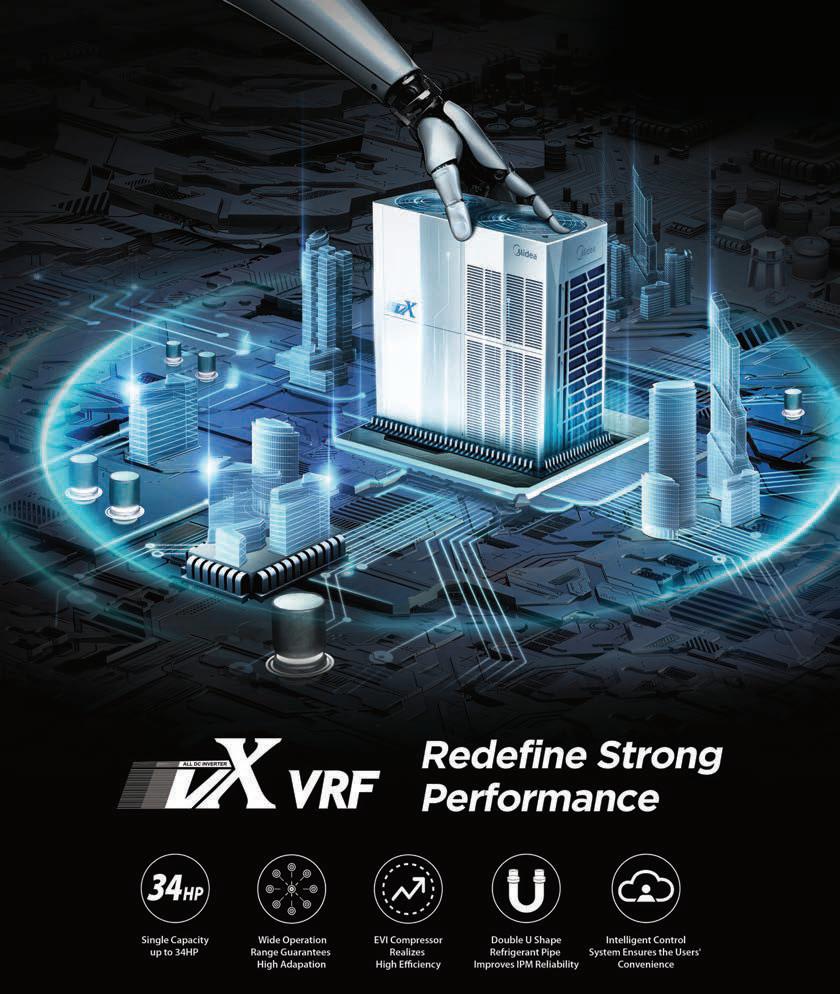




Standards have been driving global value chains. However, not many people are aware of how it is happening.ThiswaswhytheIEMElectricalEngineering Technical Division, Standards Malaysia and Suruhanjaya Tenaga (Energy Commission of Malaysia) jointly organised thebiennialASEANElectrotechnicalSymposium&Exhibition 2018 on 4-5 December, 2018, at Connexion Conference & Event Centre in Kuala Lumpur.
More than 600 engineering professionals, government officials and policy makers, standards organisations, manufacturers, suppliers and solution providers as well as owners and operators from both domestic and ASEAN countries participated in the keynote session on the following themes: Standards Drive Global Value Chains, Generation,Transmission&Distribution,ElectricalInstallation in Buildings and Electrical Equipment & Appliances.
Participantsgainedvaluableinsightsfromtheexpertson the latest electrotechnical standards,technology products and services and understandings on the engineering challenges and opportunities in the ASEAN region.
After Ir.David Lai Kong Phooi,President ofThe Institution of Engineers, Malaysia (IEM), welcomed the guests,Y.Bhg.
Datuk Fadilah Baharin, Director General of Standards Malaysia, gave her opening speech. The event was then launched by Datuk Fadilah, Mr. James M. Shannon, President of the International Electrotechnical Commission (IEC), Y.Bhg. Datuk Ir. Ahmad Fauzi bin Hasan, Chairman of Energy Commission of Malaysia, Encik Abdul Razib bin Dawood,Chief Operating Officer of Energy Commission of Malaysia, Ir. David Lai Kong Phooi and Y.Bhg. Prof. Emeritus Datuk Dr. Marimuthu Nadason, Chairman of Malaysia Standards and Accreditation Council.
After a break,Mr.James Shannon delivered his keynotes ontheroleofStandardsinGlobalValueChains.Hegavean overview of the work of the IEC which was initially intended to help bring electricity safely to people worldwide.IEC then followed by developing standards for various electrical and electronic equipment. Standards are vital to ensure performance and safety when operating equipment. Without standards, it would have been impossible to have the technology of today.
He also shared his ideas on the importance of“connect, exchange and impact” among stakeholders. It is through standards that we are able to advance technology and,at
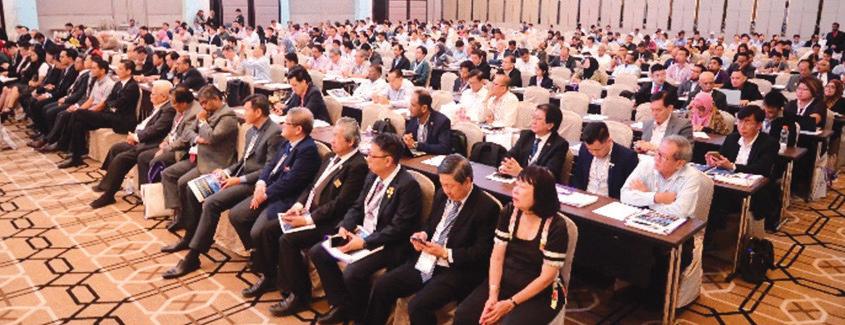
the same time,improve safety and reliability of equipment. Using standards has also allowed companies to sell products internationally. He applauded Malaysia for its participation in standardisation activities; the involvement of its IECYoung Professionals in particular,will put Malaysia in a good position in future.
Then Encik Shaharul, Director (Standardisation) of Standards Malaysia, delivered a keynote address on Malaysia Engagement in Standards &Value Chain.He said ASEANwasoneofthemostdynamicregionsintheworldas the economy was growing rapidly.In accordance with the ASEAN Economic Blueprint 2025,we are to drive the global value chain more intensely.As the sole national standards bodyinthecountry,StandardMalaysiawillsupportIEMinits initiative to harmonise standards among ASEAN countries.
Next, Encik Abdul Razib bin Dawood talked about Roadmap for a Sustainable Energy Supply Chain. The Energy Commission,based on the Integrated Generation & Transmission Plan,has targeted for more Renewable Energy (RE) in the system.This is in tandem with the government’s aim to have 20% RE out of the total energy capacity by 2025.With that,we have to tackle the EnergyTrilemma,three competingchallengesoftheenergymarket,namelyenergy security,energy equity and environmental sustainability.
For the next theme, Generation, Transmission & Distribution,the first speaker was Ir.Loo Kok Seng.His focus was on Generation, Future Alternatives & Future Grid. He started with ways to reduce greenhouse gases which included decarbonisation. In the Renewable Energy Act 2011, the target is to have 20% renewable energy in the capacity mix by 2025.TNB has also invested in Grid of the Future technologies which will help improve grid reliability and efficiency.
The next keynote speech was on ASEAN Energy Sector Developments Towards a Clean, Sustainable & Prosperous Future, delivered by Dr Sanjayan Velautham, Executive Director of ASEAN Centre for Energy (ACE).ASEAN recently
endorsed the ASEAN Economic Community (AEC) which rested on four pillars. There are single market and production base, competitive economic region, equitable economic development and fully integrated region in the global economy.ACE is an intergovernmental organisation representing the interests of the 10 ASEAN Member States in the energy sector.Further,an Enhanced ACE,a recently endorsed business plan, has vital roles to become the ASEAN think-tank, to become a catalyst to unify and strengthen ASEAN energy cooperation and to become the ASEAN energy data centre and knowledge hub.
The keynote presentation continued with Encik Zaharin Zulkifli from Energy Commission of Malaysia with Distributed Energy System.His report was on his research on distributed energy system. Encik Muhamad Zulkifli Meah from Tenaga Nasional Berhad (TNB) then gave an overview of the possibility of cross-border energy transmission and the general analysis on the technical requirement for that to occur,in his talk on Connecting ASEAN Through the Power Grid (Laos-Thailand-Malaysia).
The event continued with keynote addresses on RE and Energy Efficiency Developments in Myanmar – Challenges & Opportunities, presented by Mr. Khin Maung Win from Myanmar Engineering Society (MES). The talk focused on the energy issue in Myanmar and how it tackled the challenges.
ThenDrFlorigoC.VaronaofThePhilippinesTechnological Council (PTC) talked about Power Quality & Distribution Reliability Initiatives in Philippines.The energy concerns in The Philippines include quality, reliability, affordability and security. He also discussed laws, statues and codes in The Philippines related to energy.The first day ended with the final keynote address delivered by Er. Lim Say Leong from The Institution of Engineers,Singapore (IES) on Standards to Advance Energy Efficiency Implementation.He illuminated on the ideas of smart homes and smart cities and highlighted the importance of energy efficiencies and the
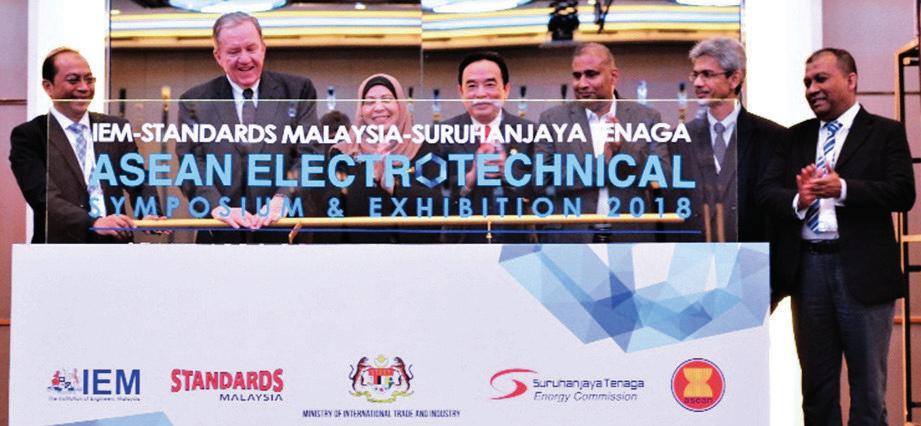

differences from energy conversation. He also discussed Energy Conservation Act,a Singaporean initiative.
The second day started with Ir. Prof. Dr Jeffrey Chiang Choong Luin, Secretary-General of ASEAN Federation of Engineering Organisations (AFEO) who delivered the white paper launching speech. White paper is an initiative by the ASEAN Engineering Inspectorate-Electrical Installation (AEI-EI) formed under AFEO. It is a comprehensive study comprising the understanding of the differences in ASEAN and the survey reports for consideration. This master plan was developed by considering inputs by various organisations, including ASEAN, AFEEC, IEC, APEC and others. This white paper will benefit the consulting engineer,contractor,product engineer,electrical engineer, educational personnel and other relevant practitioner.
Then Ir. Prof. Dr Jeffrey Chiang Choong Luin and Ir. Prof. Dr Norlida Buniyamin, AER Head Commissioner of AFEO launched the white paper for Electrical Installation Standards & Regulations in Buildings Amongst ASEAN Countries.
The symposium continued with keynote presentations on Electrical Installation in Buildings.Ir.Lim KimTen from IEM started with Enhancing Compliance to MS IEC 60364 Series and Future IEC Standards. He gave a brief explanation on various standards, namely IEC, ISO, ITU and BS and explained about the Electricity Supply Acts and Electricity Ordinance in Malaysia. He also presented the standards development cycle. Each standard will go through the process of establishment, standard development, awareness, monitoring and improvement. He stressed that compliance to MS 1979 and MS1936 was mandatory in Malaysia. Apart from this, there are other guidelines available for reference such as for design, installation, inspection, testing, operation and maintenance of water heater systems, non-domestic electrical installation safety code and guidelines on electrical safety management plan and programme.
The next topic on National Electrical Installation Requirements of Indonesia: PUIL 2011 was presented by Ir. Dr Arwindra Rizqiawan, Persatuan Insinyur Indonesia (PII). He said Indonesia had established the code in electrical installation in 1964. From 1987, the code was recognised as standards which regulate design and installation, especially in the low voltage level and building application. It has become the reference for issuing the certificate of operation.
Following this was Ir. Chin Lee Tuck from Pertubuhan Ukur Jurutera & Arkitek (PUJA) who spoke on BS 7671: Requirements for Electrical Installations in Brunei. He mentioned the standards currently practised in Brunei, namelyRequirementsforElectricalInstallations(BS7677),IET Wiring Regulations (PBD 12: 2017),and Building Guidelines & Requirements, Electrical Installation Requirements 2011. He also highlighted the classification of contractor and licensed electrical workers. Foreign engineers who meet theBAPEQSrequirementcanregisterasengineersinBrunei.
Lao Electrical PowerTechnical Standards was presented by Mr. Viengsay Chantha and Mr. Sychath Boutsakitirath from the Department of Energy Management, Ministry of Energy & Mines, Lao People’s Democratic Republic. He talked about the Lao Electrical Power Technical Standards, the electrification rate in Laos and discussed international standards and practices that had been undertaken. He highlighted the need to add details to existing documents to address the challenges of increased hydropower development activities in Laos.H.E.LY Sovannarith,Board of Engineers Cambodia (BEC) then gave a brief overview of the Electric Power Technical Standards of The Kingdom of Cambodia which covers all power facilities, house wiring and electrical appliances except airplane equipment. Cambodia plans to realise national code using IEC standards and achieve 20% growth in the power sector.
The final theme of the day was Electrical Equipment & Appliances. Ir. Rocky Wong Hon Thang of IEM started with
ASEAN Economic Integration & Trade Facilitation in Standards and Conformance. He gave a brief overview and mentioned that the initial purpose of the association was peace.The next presentation,from Encik M.Zamri bin Mustaffa from SIRIM QAS International Sdn. Bhd., was on Safety of Electrical Appliances/Equipment and Application of Safety Standards. He explained the definition of safe product and highlighted some safety testing methodologies. He advised that all appliances used must have approval from the regulatory body, comply with safety standard requirements,beverifiedbyanaccreditedlaboratoryandbeproperlyinstalledbya competent person.Then Prof.DrTran Dinh Long fromVietnam Union of Science and Technology Associations (VUSTA) spoke on Standards Works in VN and National Regulation on Electrical Installations of Dwelling & Public Buildings.He clarified the hierarchy of legal documents available in Vietnamese and said it priorities laws, followed by decrees, circulars and standards. The important laws available in Vietnam include Electricity Law 2004 and Law on Energy Efficiency & Conservation.
After a break, the keynote address on ASEAN Economic Integration for 4th Industrial Revolution (4IR) was presented by Puan Hazami Habib, Chief Executive Officer of Academy of Sciences Malaysia. She spoke on the global outlook of the top five mega trends and global risks. She highlighted the various strategies employed in various countries to tackle the challenges and the importance for the transformation from traditional to new economy. She ended by proposing some ideas for ASEAN to move forward. The presentation continued with Mr. Prasitt Hemwarapornchai, The Engineering Institute of Thailand, on Data Centre and Energy Efficiency Developments and Standards in Thailand – Challenges & Opportunities. He described the definition of a data centre and highlighted the importance of its availability, reliability, quality and performance. In addition, the site location and space planning were also important.
The last address was from Dr Sanjayan Velautham, on ASEAN Regional Policy Roadmap for Minimum Energy Performance Standards (MEPS). He presented on energy efficiency and conservation programme for 2016-2020. He said the AEC goal can be achieved by having technical standards harmonisation and mutual recognition for energy efficiency.
The symposium has raised the awareness level of professionals from various backgrounds and countries on how standards drive value chains.With initiatives such as by the AEI-EI,it is just a matter of time before standards can truly drive the ASEAN value chain.
Authors' Biodata
Chan Chi Yen is an electrical engineer in a mechanical & electrical engineering consultancy company. Apart from his involvement in the Electrical Engineering Technical Division of IEM, he also contributed to the National Working Group of the ASEAN Engineering Inspectorate-Electrical Installation (AEI-EI).
Dr Siow Chun Lim is a senior lecturer at Multimedia University, the Secretary/Treasurer of EETD (20192020) and Secretary of the National Working Group of the ASEAN Engineering Inspectorate-Electrical Installation (AEI-EI).






Your One-Stop Steel Sheet Piles Solution Specialist
SG SHEET PILING SDN. BHD. is a Malaysian-based Foundation Solutions company specializing in Flood Mitigation, Civil, Infrastructure, Ports, Waterfront Development, Power Generation projects in the Asian Region.
Our product range includes hot-rolled & cold formed sheet piles in various width from 400mm to 900mm, combined wall system, complete anchorage tie back system, strutting system and accessories.
We provide our technical design services to the local consultant or client on project feasibility, scheme selection and detailed design. We value add to the products we supply by customizing the products for each project. Customization includes special steel grade requirements, specific lengths and fabrication on request.



Facilities at Our Factory







JULY-AUGUST 2019





1-Day Course on “HAZOP Training for Team MembersA Practical Approach”
Date:16July2019(Tuesday)
Time:8.30a.m. to5.30p.m.
Venue:WismaIEM ApprovedCPD:7
Speaker:Ir. RazmahwataMohamadRazalli

Comprehensive Stock for Hot-rolled Sheet Pile to MS2674
SG Sheet Piling Sdn Bhd
C-23-09 The Hub SS2, Jalan Harapan, Seksyen 19 46300 Petaling Jaya, Selangor Darul Ehsan Tel: +603 79321663 Fax: +603 7932 1163 Email: sales@sgsheetpiling.com.my www.sgsheetpiling.com.my

Standards had been created since the start of civilisation, for instance, the science of weights and measures to standardise units of measurement for trade, the calendar to predict seasonal changes and agricultural development, standardisation of the railroad gauge during the industrial revolution in the 19th century and so on.
Today, standards cover everything, from the moment we wake up in the morning and use the hair dryer after a shower to the telco networks through which our smart devices connect us to the Internet so we can browse the news and social media.These events are governed by sets of rules and specifications which are written down and published in the form of International Standards to help product manufacturers design products that work together safely and as intended.
Standards are also required by testing laboratories to ensure products are safe to use. Regulators and governments rely on standards to protect the public from hazardous products. Having standards means consumers can be confident that the products they use are safe, reliable,efficient and of good quality.
Founded in 1906, the International Electrotechnical Commission (IEC) is a not-for-profit, quasi-governmental

organisation which develops International Standards and operates Conformity Assessment (CA) systems in the fields of electrotechnology (electrical, electronic and related products,processesandtechnologies).Itsroleistofacilitate the complicated process in standards development to reach a consensus or agreement among the many experts representingcountriesfromaroundtheworldwhovolunteer to prepare the rules,specifications and terminology.The IEC provides the platform where industry, academia, research and testing laboratories, governments, consumer groups etc.are represented.
Many national standards are IEC standards; standards and CAs are the two pillars of the IEC.Through itsTechnical Committees (TCs) and Sub-Committees (SCs), the IEC brings together 171 countries, 20,000 standardisation experts and over 200 TCs and SCs from every corner of the globe to share their expertise and to collaborate on evolving needs and technological advances.TCs and SCs prepare technical documents on specific subjects within their respective scopes, which are later submitted to the IEC members for voting and approval as International Standards.
The IEC runs 4 CA Systems which cover the different areas of electrotechnology,namely:
1. IECEE (system for conformity testing and certification of electrotechnical equipment and components) which covers the safety and performance of electrical equipment used in homes, offices and health care facilities
2. IECEx (system for certification to standards relating to equipment for use in explosive atmospheres) which focuses on hazardous areas where flammable gases, liquids and combustible dusts may be present
3. IECQ (approval and certification system for electronic components and related materials and processes) which covers restriction of hazardous substances usage in electronic products and components
4. IECRE (system for certification to standards relating
Yes! I would like to be a subscriber of The Institution of Engineers, Malaysia’s publications
Name: _________________________________________________________________________________________________________
Mailing Address:_________________________________________________________________________________________________
Country: ________________________
Company/Institution:______________________________________________________________________________________________
Title: ____________________________________________________________________________________________________
Telephone No: _________________________ Fax: _________________________ Email: _________________________________
Please commence my subscription from: _________________________(month/year) Signature: _______________________________
To start your subscription of IEM’s publications, complete this form and mail it back to the address below. For faster processing, fax it to: +603 7493 1047. Thank you.
What is your primary job title?
Corporate Management (including chairman, president, proprietor, partner, director, vice president, general manager, division manager, import/exportmanager,othercorporatetitle)
Management (including project/contract/equipment/service/transport districtmanager,clerkofworks,othertechnicaloroperatingmanager)
Engineering/Design (including chief engineer, chief designer, civil/ highway/mechanical/planningengineer,otherengineering/designtitle)
Buying/Purchasing (including chief buyer, buyer, purchasing officer, otherbuying/purchasingtitle)
Titles allied to the field (architect, consultant, surveyor, research and development professor, lecturer, supervisor, superintendent, inspector orotheralliedtitle)
Others(pleasespecify)____________________________
What type of organisation do you work in? (Tick one box only)
Contractor
Sub-contractorspecialist
Designandbuildcontractor
Consultingengineering/architectural/quantitysurveyingpractice
Mining/quarrying/aggregateproductioncompany
Petroleumproducer
International/nationalauthorities
National/regional/localgovernment
Publicutilities(electricity,gas,water,deckandharbour,other)
Manufacturer
Distributor/importer/agent
Constructiondepartmentoflargeindustrial/Commercialconcern
Association/educationestablishment/research
Constructionequipmenthire/rentalcompany
Project/constructionmanagementconsultancy
Others(pleasespecify)_______________________________

What are the main activities of your organisation? (Tick all that apply)
Constructionsof: Manufacturerof:
Roads/bridges Constructionequipment
Dams/reservoirs/irrigation Cement
Harbours/offshore structures Other construction materials
Foundations/tunnels Distribution
Pipelines/refineries Construction equipment
Structures/steelwork Constructionmaterials
Building(commercial,industrial) Hire/rentalofconstructionequipment
Housing Design
Constructionmanagement Earth-moving/opencastmining Deepmining Aggregateproduction
Others(Pleasespecify)_________________________________________
Rate (Please tick)
RM360.00 -12issuesofJURUTERA
RM84.00 -2issuesIEMJournal(Half-yearly)
Terms and Conditions:
1) Thesubscriptionistobeprepaid.
2) Pleasemakechequepayableto Dimension Publishing Sdn. Bhd.
3) Subscriptionsarenotrefundable.
4) Magazine/swillbesenttothemailingaddressgiven.
5) Studentsareentitledfora20%discountfromtheabovesubscriptionrate.
6) Students must submit a photocopy of the student identification card together withthepayment.
7) Theaboverateisinclusiveofdeliverychargesandapplicablein Malaysiaonly.
8) Additionaldeliverychargeswillapplytooverseassubscribers.
For subscription enquiries, please contact +603-7493 1049 or email to info@dimensionpublishing.com





Nehemiah-OVM provides the following products and services:
- Post-tensioning solution provider
- Carpark Flat Slab
- Transfer Plate
- Beams, Box Girders
- Alternative design solutions
- Cable systems (stay cable main cable hanger)
- Bridge bearing and expansion joint
- Construction solutions (heavy lifting, ILM, etc)
- Monitoring, repairing and strengthening for structures





The Strand, Kota Damansara
47810 Petaling Jaya Selangor Darul Ehsan
Malaysia
Tel: (603) 6142 6638
Fax: (603) 6142 6693
Email: enquiry@nehemiahpt.com Certified by the European Organization for Technical Approval



to equipment for use in Renewable Energy applications) which ensures the safety,reliability and durability of solar PV,wind and marine energy conversion technology.
Industry 4.0 encompasses production/manufacturing-based industries, marrying advanced manufacturing techniques with digital transformation, driven by connected technologies to create intelligent manufacturing systems which are not only interconnected, but also have the ability to communicate, analyse, forecast and use this information to drive further intelligent actions.
New business models and technologies such as the Internet of Things (IoT), big data, artificial intelligence (accurate diagnosis in healthcare systems, market and financial data analysis, self-driving cars etc.) and additive manufacturing (aerospaceandautomotivecomponentsmanufacturing,biocompatiblematerials for customised implants, life-saving devices in the medical sector, efficient and environmentally friendly energy and power sector components manufacturing, etc.) are driving the change of current business models and shifting the global economics and market structures.
Industry 4.0 is opening the door to connectivity,innovativeness and economic strength,allowing businesses to be more flexible,efficient and resource-saving.The key ingredient to this digital revolution is data.The efficient utilisation of transforming raw data into meaningful information is an essential enabler for future businesses. Thewideuseofnewandadvancedtechnologiesrequiresanintelligentintegration system, which can only be achieved if the relevant technologies, interfaces, frameworks and formats conforms to globally accepted standards. Therefore, Industry 4.0 and standardisation must go hand in hand.
Industry 4.0 involves global economic transformation. Hence, national standardisation activities need to be harmonised with international level to focus on stipulating the international collaboration and cooperation mechanisms and exchange of information.In Malaysia,the Ministry of InternationalTrade & Industry (MITI) is spearheading the national transition to Industry 4.0 through collaborative efforts with relevant ministries and agencies, funding and incentives, talent and human capital, technology and standards and digital-infrastructure and ecosystem.
The IEC has embarked on the development of Smart Manufacturing standards with the International Organisation for Standardisation (ISO) such as the participation of Joint Technical Committee, ISO/IEC JTC 1 – the standards development environment for Information and Communication Technology (ICT) to form Working Groups (WGs) to look into harmonising existing reference models and to oversee the development of the underlying architecture for smart manufacturing.
The main pillars or technology drives of Industry 4.0 include Autonomous and Artificial Intelligence (AI) where production or manufacturing processes will become increasingly digitised and interconnected cyber-physical systems. A recent article by the Forbes, Artificial Intelligence Beats the Hype with Stunning Growth, suggests that investment in AI is growing very fast.The Stamford, Conn., firm found that AI implementations grew 37% during 2018,and 270% over the last four years. IDC Corp., an international investment service forecasts spending for cognitive and AI systems will reach US$77.6 billion by 2022,and notes that 60% of global GDP should be digitised by 2022,driving almost US$7 trillion in Information Technology (IT) spending. Today, all sectors rely heavily on AI, from finance, manufacturing and robotics to healthcare,transportation,household appliances and even our smartphones which we carry everywhere we go!
AI is evolving and expanding far more quickly than we have ever imagined. So, it is important that AI technology standardisation needs to be considered to achieve global adoption. The AI ecosystem can be divided into 3 key areas involving technical,societal and ethical considerations.

How do we implement human ethics in AI? What moral decisions should be made by AI in self-driving cars on life and death situations? For example, if the brakes suddenly fail, should a car steer to the left and probably cause the death of one man or should it steer to the right and cause injuries to 20 people?TheAI systems must be transparent to allow users to understand howAI decision-making is made.
The IEC Standardisation Evaluation Groups (SEGs) are established to identify new technical areas and to anticipate emerging markets or technologies such as smart manufacturing, communication technologies and smart home/office building systems.The IEC SEG 10 – Ethics in Autonomous and Artificial Intelligence Applications is set up to evaluate work that covers a broad area of new technologiestoidentifyethicalissuesandsocietalconcerns throughout its work, and to collaborate with broader technical committees within the IEC as well as to develop broadly applicable guidelines for IEC committees on ethical aspects related to autonomous andAI applications.
AI helps to streamline efficiency for businesses in smart manufacturing as it can provide insights into where improvements can be made and more importantly, it can provide insights into where businesses can go further in terms of production planning. Standardisation is of central importance for Industry 4.0 which requires an unprecedented degree of system integration across domain borders, hierarchic boundaries, and life-cycle phases. The IEC Standards are playing a key role in the transition to Industry 4.0.
The 9th IEC Young Professionals (YPs) Programme was held in October 2018, in conjunction with the 82nd IEC General Meeting in Busan, Korea.YPs are hand-picked by their National Committee (NC) to represent their country. Last year, there were 80 YPs from 39 countries, bringing together engineers, technicians and managers from around the world to shape the future of international standardisation and conformity assessments in the field of electrotechnology.
The programme provides YPs with the opportunity to amplify their voices in the international arena, enhances
networking and engagement among YPs, develops awareness of how IEC works and ensures the future of technology transfer.YPs also meet their peers, IEC officers and technical experts from all over the world. Malaysia is a full member of IEC, led by Standards Malaysia (National Standards Body) and the Malaysian National Electrotechnical Committee (MyENC).
At the 9th IECYPs,Malaysia was represented by Mr.Lim Sai Seong from The Electrical & Electronics Association of Malaysia and Mr.Alex Looi Tink Huey from the Institution of Engineers,Malaysia.
At the Busan Exhibition & Convention Centre (BEXCO), YPs were greeted warmly by the Korean host committee. The programme started with the IEC President’s address by Mr. James M. Shannon who said IEC recognised that young people had a different understanding of technology and so approached issues differently. He stressed on the importanceofhavinganopen,forwardlooking,transparent and nimble mindset and said involvement with the IEC will serve the needs of the global market and improve our quality of life.
By attending and observing the Standardisation Management Board (SMB) and Conformity Assessment Board (CAB) meetings, the YPs gained insight into how IEC management meetings operate. The IEC Council delegates to the SMB the management and supervision of the IEC standards work: Responsibility for the setting up and disbanding of Technical Committees (TCs) and Subcommittees (SCs), approval of their scopes, appointmentofTC/SCChairsandallocationofsecretariats, allocation of standards work and timeliness of standards production.
CAB manages and supervises the IEC conformity assessment activities, including oversight of the IEC conformity assessment systems: Responsibility for setting the IEC conformity assessment policy, promoting and maintaining relations with international organisations on conformity assessment matters and creating, modifying and disbanding conformity assessment systems.
The YPs were also invited to attend the IEC GM 2018 opening ceremony, which was attended by over 3,300 delegates. The theme for the 82nd GM was Smart Cities
The principal of a long-established Environmental Engineering Company in Malaysia is seeking to divest his shareholding. The company has extensive experience in sewage treatment, air and water pollution control and treatment, solid waste handling and ancillary turnkey projects related to the reduction of environmental pollution. The principal is seeking a gradual divestment. Return of investment projected to be within four years. Interested parties are invited to discuss particulars by contacting the principal via Phone/WhatsApp at +6012 383 0564.





& Sustainable Societies. South Korea’s President Moon Jae-in also welcomed IEC delegates to Busan.“The world today is experiencing a wave of innovation ushered in by the 4th Industrial Revolution. Such innovation is a result of new technologies emerging in the electrical and electronic fields, with artificial intelligence,IoT and big data at the forefront.At this general meeting,I hope to gather insights into the role and contribution of standardisation in responding to Industry 4.0,”he said.
The IEC YP 2018 programme successfully brought together the whole IEC YP community, to share their thoughts with IEC and for further involvement in IEC work. It provided an exceptional platform for networking opportunities with IEC delegates to build knowledge, exchange creative ideas and expand professional contacts.
The programme also fostered a culture of innovation and teamwork among YPs to be ahead of the technology curve in the electrotechnical field.Together with Standards Malaysia, Mr. Alex Looi and Mr. Lim Sai Seong will continue to initiate the development of the IEC YP programme in Malaysia to encourage the involvement of the future generations in IEC work, to develop consensus building skills which are essential for IEC work and to reach out to organisations, conferences,academia and trade associations.











Venue:WismaIEM
ApprovedCPD:14.5


Speaker:Mr. RobertGan





2-Day Course on "Project Estimation and Cost Control"
Date:17-18July2019(Wednesday- Thursday)
Time:9.00a.m. to5.30p.m.
1-Day Seminar on Continous Emission Monitoring System
Date:18July2019(Thursday)
Time:9.00a.m. to5.30p.m.
Venue:WismaIEM
ApprovedCPD:Applying
Speaker:OoiKweiLee, Mohd Yuzir&Kuan TzeMing

2-Day Course on "Project Planning & Scheduling"
Date:22-23July2019(Monday- Tuesday)
Time:9.00a.m. to5.30p.m.
Venue:WismaIEM
ApprovedCPD:13
Speaker:Ir. FrankieChongKwetHin

PARTICIPATE IN THE
The co-location of POWERGEN Asia, Asian Utility Week, DISTRIBUTECH Asia, SolarVision and Energy Capital Leaders Asia provides you with one show covering the whole value chain of power - from generation to transmission and distribution to its digital transformation.
The combination of these leading energy shows will bring an unprecedented authority, with insights shared by the world’s most forward-thinking experts and innovators.
Here you will discover the future of Asia’s Power & Energy industry.


Hydrological Procedures (HP), published by the Department of Irrigation and Drainage Malaysia (JPS), have been widely used by various government agencies and private sectors in the field of water resources since 1973. The primary aim is to assist engineers and researchers in the development of hydrological monitoring programmes, to conduct hydrological analysis and to select hydrometric instruments which comply with JPS standards.To date,a total of 32 HPs have been published.
The work of a hydrologist has changed substantially with the advent of modern methods and instruments. As more and more hydrological data have been accumulated in recent years, it is time to review these procedures and to incorporate new methods, technologies and “best practices” in hydrometric development, monitoring and hydrological analysis.
Ingeneral,HPcanbecategorisedinto3mainapplications:
1. Procedures that consist of various hydrological design methods and analysis (i.e.HP1,HP4,HP5,HP11,HP12,HP13, HP16,HP17,HP18,HP20,HP26 and HP27)
2. Procedures that describe various hydrological data collection methods, data management and data quality control (i.e.HP2,HP6,HP7,HP10,HP15,HP19,HP22 and HP28)
3. Procedures related to hydrometric instrument standards (i.e.HP3,HP8,HP9,HP14,HP21,HP23,HP24,HP25,HP32,HP33, HP34 and HP35).
Detail of these procedures are as stated inTable 1 (page 23). HP1 (Estimation of Design Rainstorm in Peninsular Malaysia) and HP26 (Estimation of Design Rainstorm in Sabah and Sarawak) are the most essential procedures for analysis of water related projects in the country. These two procedures of design rainfall derivation have been used in conjunction with other procedures for surface runoff estimation such as HP4 (Magnitude and Frequency Flood), HP5 (Rational Method), HP11 (Snyder Method), HP16 (Urban Hydrology) and HP27 (Clark Unit Hydrograph Method).These procedures can provide reliable and realistic estimates of design surface runoff and flood hydrograph for the purpose of determining structure sizes for proper drainage and other control measures based on design protection level.
The main theory, methodology, design sequence and worked examples of both design rainfall analysis and flood

hydrographestimationproceduresaredescribedindetailin each HP.These simplified procedures are most appropriate and useful for hydrological analysis and design for rural and ungauged catchments.
One of the most crucial elements in hydrological monitoring programme is a good data management system. Hydrological data are undoubtedly complex. It is therefore, essential not to overlook how well hydrological data is managed after acquisition.
Hydrologists are responsible for collecting, analysing, validating, archiving and distributing vast amounts of hydrological data. For this purpose, HP2, HP10, HP15, HP19, and HP22 describe the universally accepted methods and “best practices for the measurement of flow, water quality sampling and suspended sediment sampling in open water courses.
HP6 and HP7 describe data management system such as hydrological station numbering system, hydrological station identifier system and hydrological station registers.
HP28 describes in detail the key procedures, methodology and analysis sequence of hydrological data quality checking, screening and rectification. In addition, worked examples of data quality assessment using actual data are also described in this HP.
On equipment and instrumentations, HP3, HP8, HP9, HP14, HP21, HP23, HP24 and HP25 discuss the standards, accuracy and reliability,sensitivity and precisions,methods for field installation and calibration as well as procedures for periodical maintenance. Detailed requirement of rainfall, water level, stream flow and water quality stations and equipment based on JPS standard, are described in HP32,HP33,HP34 and HP35.
HP4,HP6,HP7,HP11andHP26wereupdatedin2018,using the most recent methodology,latest hydrological data and up-to-date technology. New additions to JPS Hydrological Procedure are HP28,HP32,HP33,HP34 and HP35.Besides the updating of HP1,HP2,HP10,HP19,HP21,HP22 and HP25,the development of HP34 will also be implemented by the end of 2019.Although these Hydrological Procedures are simple and comprehensive, engineers and researchers should observe and understand their suitability, assumptions and limitations within the given scope of application.
HP NO.HYDROLOGICAL PROCEDURE (FIRST PUBLICATION
HP1Estimation of Design Rainstorm in Peninsular Malaysia (1973) 2015
HP2Water Quality Sampling for Surface Water (1973) -
HP3A General Purpose Event Water-Level Recorder (Capricorder Model 1598) (1973)-
HP4Magnitude and Frequency of Floods in Peninsular Malaysia (1974)2018
HP5Rational Method of Flood Estimation for Rural Catchments in Peninsular Malaysia (1974)2010
HP6 Hydrological Station Numbering System (1974) Hydrological Station Identifier System (2017) 2017
HP7Hydrological Station Registers (1974) 2017
HP8Field Installation and Maintenance of Capricorder 1599 (1974) -
HP9 Field Installation and Maintenance of Capricorder 1598 Digital Event Water Level Recorder (1974) -
HP10Stage-Discharge Curves (1976) -
HP11Design Flood Hydrograph Estimation for Rural Catchments in Peninsular Malaysia (1980)2018
HP12Magnitude and Frequency of Low Flows in Peninsular Malaysia (1976)1985
HP13The Estimation of Storage-Draft Rate Characteristics for Rivers in Peninsular Malaysia (1976)-
HP14Graphical Recorders - Instruction for Chart Changing and Annotation (1976)-
HP15River Discharge Measurement by Current Meter (1976) -
HP16Flood Estimation for Urban Areas in Peninsular Malaysia (1976)
HP17Estimating Potential Evapotranspiration usingThe Penman Procedure (1977)1991
HP18Hydrological Design of Agriculture Drainage Systems (1977) -
HP19The Determination of Suspended Sediment Discharge (1977) -
HP20Hydrological Aspects of Agricultural Planning and Irrigation Design (1978)-
HP21Evaporation Data Collection Using U.S.Class‘A’Aluminium Pan (1981)-
HP22River Water Quality Sampling (1981) -
HP23Operation and Maintenance of Cableway Installations (1982) -
HP24Establishment of Agro-Hydrological Stations (1982) -
HP25Standard Stick Gauge for River Station (1982) -
HP26Estimation of Design Rainstorm in Sabah and Sarawak (1983) 2018
HP27 Estimation of Design Flood Hydrograph Using Clark Method for Rural Catchments in Peninsular Malaysia (2010) -
HP28Hydrological Data Quality Checking,Screening and Rectification Procedures (2019)-
HP32Hydrological Standard for Rainfall Station and Instrumentation (2018)-
HP33Hydrological Standard for Water Level Station and Instrumentation (2018)-
HP34Hydrological Standard for Stream Flow Station and Instrumentation (2019)-
HP35Hydrological Standard for Water Quality Station and Instrumentation (2018)-
Authors' Biodata














24th August 2019



28th September 2019







19th October 2019




23rd November 2019










21st December 2019 at Wisma IEM 9am – 1pm






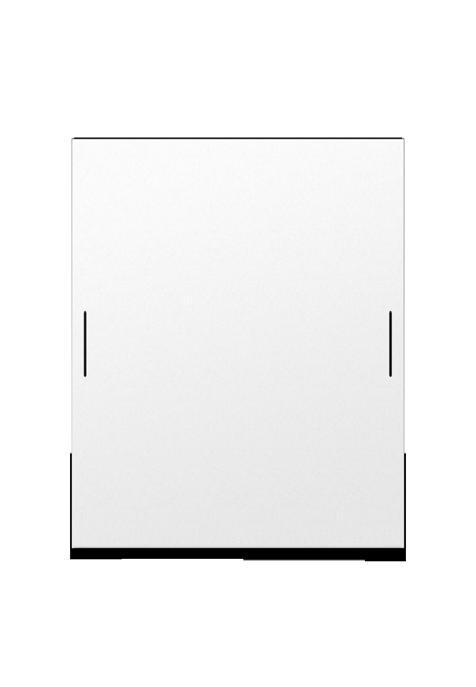



















1-Day Course on “Offshore Sand Separation: Design, Operation And Maintenance”
Date:23July2019(Tuesday)
Time:9.00a.m. to5.30p.m.
Venue:WismaIEM
ApprovedCPD:6.5
Speaker:Ir. DrJohnEow

by
In our last discussion, we looked at the use of Behavioural Observation Cards to record learnings. When we repeat the process over and over again, the observations and coaching conversations then become as natural as eating and drinking. From a measures point of view, we start to see that the location’s measures are “green” for prolonged period of time.The process then becomes a routine or a habit.That is our aim.
Thus,we move to a different level of maturity in how we work. This is called SDCA or Standardise-Do-Check-Act. SDCA is the lesser-known cousin of PDCA (Plan-Do-Check-Act).
SinceweallknowwhatDCAis,letuslookattheS.Standardise is a step to ensure that the desired process or method is done consistently by the relevant persons.“Standardise” is done via coaching or observations on how that particular step is done. It can be documented in the Standard Operating Instructions to be used as a reference.This is where“Sub-Standard”can be checked.
Once Standardise is achieved, we can launch our next
“PDCA” cycle. It is the frequent launch of improvements without “standardisation” that causes inconsistencies in how we work.
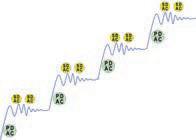
Imagine this: Though the employees haven’t understood a certain way, we go ahead and change things again.SDCA is an important cousin of PDCA to ensure we do not slip back on programmes which we have introduced. How do all these link together? Did I just see something from Kaizen?
If you have a standardised idea,contact me at: pub@iem.org. my
“If you think of standardisation as the best you know today, but which is to be improved tomorrow; you get somewhere.” –
Henry Ford
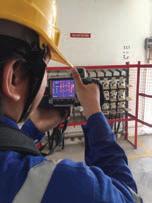



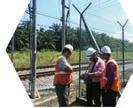



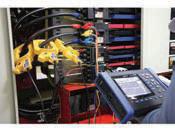

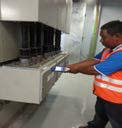





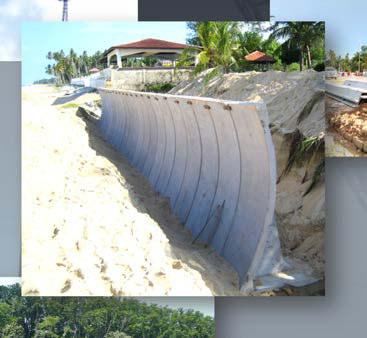




Ir. Dr Oh Seong Por

Just like Italy has the LeaningTower of Pisa,Malaysia also has a leaning tower.Located in the old town ofTeluk Intan (formerly Teluk Anson),the Leaning Tower of Teluk Intan in Jalan Ah Cheong was built in 1885 by Mr.Leong Choon Cheong and Ceylonese contractors.It was built to store water for use during a drought or in case of fire.The clock at the top was designed by James W.Benson and was purchased with donations from the local community.
Today, the water tank is empty but the clock still functions and chimes every 15 minutes. Because of the soft ground foundation and the weight of the water in the tank,the tower leaned towards the south-west.Built in the shape of a Chinese pagoda,the tower is only 3 stories and 25m high but looks like an 8-storey building from the outside.There are 110 steps from the ground to the top.It is made of wood and bricks.
The steel water tank is 5m high with a capacity of 18.36 cubic metres.Its foundation is 13m in diameter and gradually tapers to 8.2m at the top.During the Japanese Occupation,it was used as a watch tower.After Independence in 1957,the Leaning Tower of Teluk Intan was declared a national monument.The tower has been used for various purposes – water tank,clock tower,watch tower and beacon to guide ships approachingTeluk Anson.
reported by

On 4 May,2019,the Electrical Engineering Technical Division (EETD) organised a talk on Industry 4.0 – Our National Policy, prior to its 34th Annual General Meeting. There were 150 participants at the talk delivered by Puan Hazami Habib, CEO of Akademi Sains Malaysia.
World population will stand at 9.7 billion in 2050.Naturally,there will be an increase in the demand for clean water and food.Japan will be going for Society 5.0 while Singapore aims to be a Smart Nation by that time. Meanwhile, the Fourth Industrial Revolution (4IR), which started in Germany, has been adopted and intensified in many countries including Malaysia as Industry4WRD.
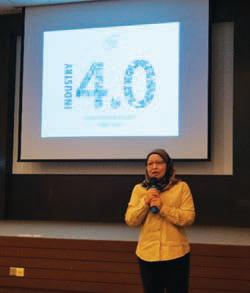
Puan Hazami on Industry 4.0
Globally,change will be driven socially,technologically, economically and environmentally. Locally, there will be a strong need to enhance global competitiveness, strengthen growth and productivity in the manufacturing industry, create high value added jobs and reduce dependency on foreign labour as well as increase SME competitiveness. Collaboration between SMEs, partnerships between academia and industry, upskilling of existing workers, standardisation of new technologies and incentivisation from the government to promote innovation and entrepreneurship will be the keys to satisfy the aforementioned needs.
Puan Hazami then talked about emerging technologies such as Artificial Intelligence (AI), blockchain technology and quantum computing which would shake up Industry 4.0. There will be a paradigm shift in the manufacturing sector towards becoming “smarter”. Industry4WRD sets the vision for Malaysia to be a strategic partner for smart
manufacturing and related services in Asia Pacific which necessitates optimisation in people, process and technology. This policy requires funding, infrastructure, regulations,skills and talents as well as technology to materialise.
The number of highly skilled workers has to be almost doubled in 2025. Engineers of the 21st century need to be equipped with skills such as complex problem solving, critical thinking, creativity and leadership. Productivity in the manufacturing industry also has to increase by 30% per person in 2025.The new economy, which is knowledge-centric, collaborative, horizontal trust oriented, customisation-based and much more flexible, will emerge. The car industry is also expected to produce zero emission vehicles, micro factories,connected and share-based vehicles.
The government will evolve in the order of an electronic government, transformatory government, lean government and ultimately, open government.Technologically speaking, Malaysia is looking at getting into the top 30 nations in terms of Global Innovation Index by 2025. Application of robots to perform repetitive tasks, drones for delivery and surveillance,3D and 4D printers to print solid and“growing” objects will not be uncommon by then.
Moving forward as Progressive Malaysia 2050, science, technology and innovation shall be fully leveraged. A total of 95 emerging technologies have been identified to power the nation progressively to 2050.These technologies will impact the country’s well-being, wealth creation and governance by establishing preventive healthcare, reducing carbon footprint, creating new business models,
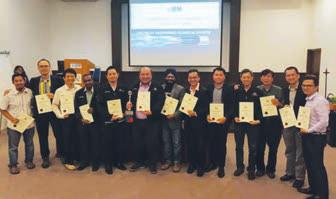


democratising knowledge and safeguarding our well-being as well as adding value to the resources and management efficiency. The academia and industry have to be bridged to share a common vision to intensify knowledge and value creation in priority areas.
Puan Hazami concluded by emphasising the importance of empowering the people to design and make 4IR a reality.
The AGM took place right after the talk. Immediate Past Chairman Ir.Chong Chew Fan took the opportunity to thank the committee (2018/2019 session) for their contributions which resulted in EETD receiving the PAOE award for being the most active technical division yet again.
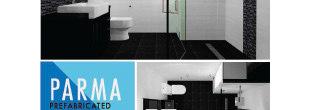
The incoming chairman, Ir. Francis Xavier, then commenced the AGM.
ChairmanIr.Francis Xavier
Deputy ChairmanIr.Lee Cheng Pay
Secretary/AdvisorDr Siow Chun Lim
AdvisorIr.Chong Chew Fan
General MembersIr.Amir Hussein bin Jaafar
Ir.Ng Win SIau
Ir.Tejinder Singh
Mr.Alex LooiTink Huey
Ms.Cynthia ChooYern Syn
Mr.Low Pek Jun

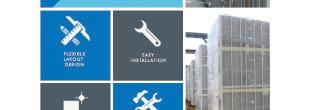

Half-Day Seminar on “Design And Application of Water Cooled aRF (Variable Refrigerant Flow) System”
Date:31July2019(Wednesday)
Time:9.00a.m. to1.00p.m.
Venue:WismaIEM
ApprovedCPD:3.5
Speaker:Ir. Ng YongKong&Mr. PohKaiSin


Absolutely.
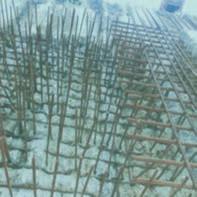
Now there is a waterproofing solution specifically engineered for this application. With the AQUELLA™ system, you can specify with confidence, as it:
• Bonds fully to both substrate and skin wall
• Seals around rebar and penetrations
• Has excellent weather and exposure resistance
• And can be spray-applied
Specifying the AQUELLA™ system delivers peace of mind waterproofing performance for your project, long after it is completed. The main contractor also enjoys speedy spray application, schedule flexibility and minimal application hazards at the job site.
Contact GCP today for a free demo: asia.enq@gcpat.com.
reported by

The Electrical Engineering Technical Division (EETD) and Information Communication Technology Special Interest Group (ICTSIG) of IEM and Institution of Engineering &Technology (IET) jointly organised a one-day seminar on Industrial Digitalisation on 19 December, 2018. There were 54 participants and 5 speakers who came from government agency,process industry,energy industry,oil & gas industry and industrial cyber security.
The keynote address was presented by Dato’ Ng Wan Peng, Chief Operation Officer of Malaysia Digital Economy Corporation (MDEC).She talked about the digital disruption happening globally and how it had impacted the way we live, work and do business. It is expected that 1 trillion objects will be connected to the Internet by 2025. While new technology used to take 38 years to reach 50 million users in the late 19th century,it took only 19 days for a new technology to reach 50 million users in 2016. Dato’ Ng also shared the 12 technologies that will disrupt us in the near future:
1. Mobile Internet.
2. Cloud technology.
3. Internet ofThings.
4. Big Data and Advance Analytics.
5. Next-Generation Genomics.
6. Advance Materials.
7. Advance Robotics.
8. Autonomous and near-autonomous vehicles.
9. 3D printing.
10.Energy storage.
11.Advance oil and gas exploration and recovery.
12.Renewable energy.
According to Dato’ Ng, while Malaysian companies have moved towards digitalisation,we are still far behind.She said some of the main challenges are:
1. Lack of structured approach.
2. Budget unavailable or not prioritise.
3. Lack of digitally skilled workforce.
4. Digital transformation is too fast paced and complex. To assist the Malaysian industry embrace the Industry 4.0, she said MITI had outlined 13 strategies under the National Policy on Industry 4.0 (Industry4WRD) as part of its roadmap to transform our manufacturing industry landscape in the next 10 years.
The second speaker was from the process industry. Ir. Johnson Tan is the Vice President of Process Automation Business Unit, Siemens Malaysia Sdn. Bhd.A pioneer in the earlier industrial revolution, Siemens has introduced The
Siemens “Digital Enterprise” approach for process industries which addresses key features of Industry 4.0 by focusing on integrated engineering and integrated operations as well as supporting the customers to respond with significant speed, flexibility and efficiency improvements.This is achieved through a structured plant-wide maintenance dashboard which provides user transparency over field devices anytime and anywhere.It focuses on early detection of process anomalies, process optimisation and productivity increase.
Then Ir. Pershanta Kumar, a senior engineer (Asset Information) with Asset Management Strategy Design & Standard at TNB Distribution Network, spoke on the energy industry. He noted that even the energy industry is affected by the technology disruption. Technology disruption comes from distributed renewable energy generation, battery energy storage system and consumer self-generating renewable energy.To remain relevant,TNB has embarked on Reimagining TNB which includes decentralisation, electrification and digitalisation.TheTNB Distribution Network is focusing on Grid of The Future (GoTF),which addresses challenges brought about by the disruption of the network/grid through the introduction of new technologies,such as bi-direction of power and greater complexity in the distribution grid.
The next speaker was Encik Izwan Hasli Mohd Ibrahim,Chief Operating Officer of Petronas ICT Sdn. Bhd. He said Petronas had, from the start, embarked on digital effort which was backboned by data-driven organisation, adoption of new ways to work and deliver new value to the customer.Petronas has embraced IT-OT integration to achieve the full potential of IoT,manage cybersecurity risk as well as the importance of the people and new ways of working in Petronas.Finally,he shared with participants, a case study of RAPID Digital deployment at Pengerang Integrated Complex. RAPID Digital application covers life safety, real-time analytics, people tracking, evacuation management and digital operating procedures.
Finally, Mr. Diego Betancur, the ICS/SCADA security engineer for APAC Region at Nozomi Networks, pointed out that, with huge number of digitalisation implementation at leading utilities,energy,manufacturing,andotherindustrialcompanies, industrial cybersecurity had become a critical issue.He shared thebackgroundofsomeincreasingcyberrisksandchallenges in securing industrial environments and introduced some industrial cybersecurity innovation and implementations.
The seminar ended with speakers, participants and the sponsors (Netpolean Group and Siemens Malaysia) networking and visiting sponsors’booths.

JURUTERA has an estimated readership of 198,000 professionals. Our esteemed readership consists of certified engineers, decision making corporate leaders, CEOs, government officials, project directors, entrepreneurs, project consultants, engineering consulting firms and companies involved with engineering products and services.
Our business partners can be assured that their products and services will be given the circulation and exposure they deserve, thus maintaining a sustained advertising presence to our core readers of decision-making engineers and technical experts. Our website offers an even wider market reach, with added international presence, aided by our international affiliation with official engineering bodies all over the world. Our online and offline advertising features such as banner advertising, article sponsorship and direct e-mail announcements have proven to be successful marketing strategies that will set the businesses of our partners apart from their competition.



For advertising enquiries, please contact:






reported by

On 22 March 2019, the Electronic Engineering Technical Division (eETD) of IEM organised an evening talk on “Transforming Your Factory Into a Smart Factory:The Revolution of Industry 4.0, by Associate Professor Dr Selvakumar Manickam of National Advanced IPv6 Centre, Universiti Sains Malaysia. Held at IEM Penang Secretariat,the talk was attended by 17 participants.
Dr Selvakumar started the talk by giving an overview of Industry 4.0 as follows:
• DigitalisationofIndustry:Connectingmachines,storage systems and equipment (cyber-physical system).
• Vertical (company departments) and horizontal (various business partners across the chain value) integration.
• Intelligent machines with independent information exchange.
• Smart Factory: Clearly identifiable and localised products.
• Controlling and optimisation in real time.
This was followed by an overview of Internet ofThings (IoT) as follows:
• Device – hardware and software that directly interacts with the world.
• Gateway – enables devices not directly connected to the Internet,to reach cloud services.
• Cloud – where data is processed and combined with data from other devices and, potentially, with other business-transactional data.
He also touched on various data transmission protocols such as Transmission Control Protocol (TCP), Internet Protocol (IP), IoT data management in cloud, machine learning,data analytics,infrastructures and platforms used to enable IoT and smart factory.
He further elaborated on SEMI Equipment Communications Standard/Generic Equipment Model SECS/GEM which is semiconductor equipment interface protocol for equipment-to-host-data communications. It is an important standard to enable a smart factory.

Finally Dr Selvakumar mentioned a case study in which various machines in a small and medium enterprise (SME) factory were connected by setting up a machine to host communication. By doing so, manual data entry and monitoring were replaced by real time online monitoring.
The talk ended at 8.10 p.m. It was indeed an insightful talk as Dr Selvakumar shared his know-how and expertise in data communication,holistic views of Industry 4.0 and of smart factories.

1- Day Seminar on “Commercial Building Solution (Chiller System) & VRF Technology Development Trend”
Date:6 August2019(Tuesday)
Time:9.00a.m. to5.30p.m.
Venue :Ballroom, SunwayResortHotel& Spa, BandarSunway
ApprovedCPD:6.5
Speaker:Mr. PeckZhao, Mr.TimothyHuang, Mr. RogerZou, Mr. ElonZhang

On 29 March, 2019, the Institution of Engineers, Malaysia,Negeri Sembilan Branch (IEMNS) organised a technical visit to the Regional Sewage Treatment Plant (RSTP) in Kuala Sawah, some 10km from Seremban, Negeri Sembilan.A group of 47 participants from engineering consultantfirms,JabatanKerjaRaya(JKR),JabatanPengairan & Saliran (JPS), industry sectors and engineering students spent a half day touring the facilities at RSTP Kuala Sawah, which was operated by Indah Water Konsortium Sdn. Bhd. (IWK).
Following the enactment of the Sewage Services Act 1993, sewage treatment was privatised to IWK, which started operations in April 1994.However,in June 2000,the Malaysian Government, through the Ministry of Finance, took over IWK. To date IWK is operating and maintaining all public sewage systems in the country except in Kelantan, Sabah, Sarawak, Johor Baru Municipal Council and Pasir Gudang Council.
Led by Ir.Dr Oh Seong Por,the group arrived at RSTP Kuala Sawah at 10 a.m. and was greeted by Encik Mohd Hafizal Awang (Engineer Treatment). We were ushered into the meeting hall where Encik Hafizal briefed us on the company profile,operation and services.
RSTP Kuala Sawah covers a total catchment area of 10,600 hectares,consisting of areas shown in Table 1.It is the largest sewage treatment plant in Negeri Sembilan.
After upgrading work was completed in January 2019,the plant had been operating with the new design Population Equivalent (PE) of 360,000.
PEorunitpercapitaloadingusedinwastewatertreatment, is the ratio of the sum of pollution load produced in 24 hours by industrial facility & service to the individual pollution load
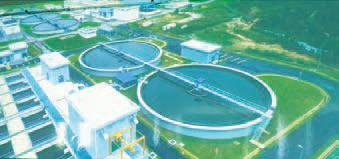

produced in household by one person in a day. The new 360,000 PE provides maximum sewage flow of 199,000 m3/ day.According to Encik Hafizal, the plant is large enough to be upgraded ultimately to 1,400,000 PE with maximum flow of 735,000m3/day.The design effluent quality (water quality after treatment) targets are:
i. Biological Oxygen Demand or BOD:10mg/litre.
ii. Suspended Solid or SS:20mg/litre.
iii. Total Nitrogen orTN:10mg/litre.
iv. Ammonium Nitrogen or NH3-N:2mg/litre.
RSTP Kuala Sawah is equipped with the latest facilities such as
Publisher:
Explore our full set of Professional and Integrated PUBLISHING MANAGEMENT SERVICES:
» Project Management
» Crea�ve Management
» Ad Space Management
» Mailing Management
» Print Management
• Annual Reports
• Booklets • Brochures
• Bun�ngs • Business Cards
• CD / DVD Replica�ons
• Calendars • Cards & Invita�ons
• Cer�ficates • Custom Prin�ngs
• Envelopes • Folders
• NCR Bill Books • Notepads
• Leaflets • Le�erheads

• Paper Bags • Posters Others








































Publishing Sdn Bhd (449732-T) Level 18-01-02, PJX-HM Shah Tower, No. 16A, Persiaran Barat, 46050 Petaling Jaya, Selangor Darul Ehsan, Malaysia.
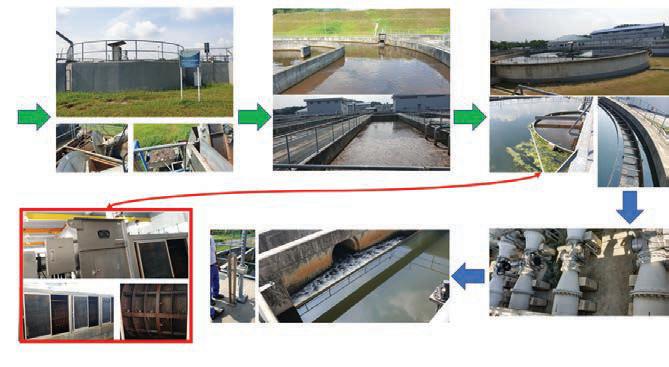
grit chamber,Oxidation Ditch (OD),clarifier,disinfection system and press dryer to perform the cleaning processes of incoming sewage flow.The figure above illustrates the process flow.
Grit Chamber: The influent flow is slowed down to allow solid substancessuchassandornon-organicparticlestosettledown and be removed by mechanical scrappers and oil scoopers. This is actually a physical filtering process to segregate solid substances as well as to protect the pumps before sewage flow is being pumped to the next treatment process.
Oxidation Ditch (OD): A 5.5m deep horse-shoe shaped basin fitted with air blowers and air diffusers.Submersible mixers generate circulation flow in order to keep activated sludge in suspension.Blowers are operated intermittently by timer control to encourage anoxic and aerobic condition. It is actually a kind of biological filtering using air and micro-organisms to biologically oxidise organic pollutants, producing waste sludge containing the oxidised material. The combination of biological mass and raw sewage is called mixed liquor. The concentration of suspended solid in mixed liquor is known as Mixed Liquor Suspended Solid or MLSS and is expressed in mg/ litre.MLSS must be monitored to ensure organic pollutants are properly degraded.At RSTP Kuala Sawah oxidation ditch,MLSS is managed at 4000mg/litre with retention time of 24hrs.
Clarifier: Settling circular tank built with mechanical scrapper that continuously removes solid particulates or impurities deposited by sedimentation.Through this action,the influent is clarified to the desired level. Sedimented impurities are discharged at the bottom of tank as sludge while other particles float to surface.This is known as scum and is removed with a scum skimmer.
Disinfection System: After clarification,effluent is pumped into the disinfection system to neutralise harmful microorganisms such as bacteria, fungus and protozoa.At RSTP Kuala Sawah,
ultra-violet (UV) is being used for the disinfection function.The disinfected effluent is discharged through the outlet channel before entering an underground pipe which carries it to Sg Linggi,6 km away.
Press Dryer: Sludge removed from the clarifier still has a high water content and this is removed at the thickening machine and press dryer. The press dryer has a rotating screw that squeezes the sludge as it is being pushed through meshes.This action separates the water and the end product is solid sludge or sludge cake which still contains some nutrients.EncikHafizalsaidthesludgecakecanbeprocessed into fertiliser.
At the end of the tour,we were ushered to the RSTP office lobby where Ir. Dr Oh thanked Encik Hafizal on behalf of the participants and there was an exchange of souvenirs. Ir. Dr Oh praised RSTP Kuala Sawah for its work in treating sewage and return effluent back to the eco system, a kind of green technology sustainability endeavour. There is no doubt that the job done by IWK really fits its slogan “We clean the unseen”.
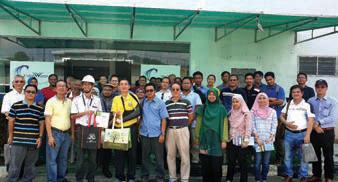

Harar is a small city of about 110,000 people in the eastern part of Ethiopia. My wife and I came to this place just 2 days before we left Ethiopia for Djibouti during our 36-day back-packing exploration of these two countries in the African Horn in 2016.
The main attractions of Harar lie within the centuriesold walled old town known as Jugal.Other than the main road that extends from its west gate to the main square near the centre of the town, Jugal is a maze of narrow alleys among nearly 2,000 traditional Adare houses and tiny mosques, shrines and tombs. Our accommodation was a guesthouse converted from a traditional Adare house. The guesthouse owner, a woman by the name of Zubeyda and who spoke a little English, showed us her living room. There were 5 platforms at different levels, covered with rugs and cushions, meant for the hosts and guests to sit according to their status. The white walls were almost completely concealed by colourful wicker baskets and plates of all sizes, and niches were filled with bowls, cups and vases. On a shelf were 4 black aflala (long-necked ceramic containers), purportedly filled with money, gold, medicine and seeds respectively,according to my Lonely Planet guidebook.
shoppers in the alleys. The vendors were almost exclusively women,and they sold mainly vegetables,fruit,spices and other foodstuff.

The inhabitants of Harar are predominantly Muslims, and they claim their city is the 4th holiest in the Muslim world after Mecca, Medina and Jerusalem.This may not be true, but the city did become an important centre for Islamic scholarship in the 17th and 18th centuries; it also spearheaded the penetration of Islam into the Horn.
We derived a great deal of pleasure from getting lost and found again in the maze of alleyways in the old town. We came across a ceremony known as “shewal”, where beautifully dressed girls and young men in white gowns danced to the beat of a drum – the girls and boys met in the hope that sparks of love would unite them.We also visited an Ethiopian orthodox church. It was particularly exhilarating to mingle with the colourful hawkers and
In the evening before we left for Djibouti, we had a most unforgettable experience that definitely could not be repeated anywhere else in the world. Through prior arrangement, a young man who was Zubeyda’s relative, showed up at about quarter past seven and led us to the main road where we clambered into a waiting bajaj, a small vehicle resembling the tuk-tuk of Thailand. We were driven out of the old town through the east gate to a spot near the edge of a forest. A man with a powerful torchlight was already there. He was the famous “hyena man of Harar” by the name of Abbas Yusuf. His wife was sitting on the ground nearby. We were the only paying spectators. Holding a bag of meat,he sat down and blew a whistle. Soon a spotted hyena appeared from the dark, followed by two more. He began to feed them. Their confidence grew and they got closer and closer to the man. Instead of throwing the meat to the beasts,he pierced the meat with a short stick and held the stick in his hand.Eventually he held the stick in his mouth and allowed the hyena to eat the meat at the other end! The sight was most awe-inspiring! Hyenas are opportunistic scavengers and predators at the same time.Their jaws are powerful enough to crush bones and they can tear a man to pieces in seconds. Abbas dared me to try feeding one of them.Oh no,thank you.
The Hararis are uncertain about how this practice of feeding the hyenas came about. Suffice it to know that Abbas learnt the trade from his father,Yusuf Mume Saleh, who started to feed the hyenas about 30 years ago. A sizeable population of spotted hyenas live in the forest and they even venture into the old town deep at night to scavenge for food at rubbish dumps. Anyone brave enough to walk in the deserted latenight alleys is likely to encounter one or more of this ferocious beast.
Yes! I would like to be a subscriber of The Institution of Engineers, Malaysia’s publications
Name: _________________________________________________________________________________________________________
Mailing Address:_________________________________________________________________________________________________
Country: ________________________
Company/Institution:______________________________________________________________________________________________
Title: ____________________________________________________________________________________________________
Telephone No: _________________________ Fax: _________________________ Email: _________________________________
Please commence my subscription from: _________________________(month/year) Signature: _______________________________
To start your subscription of IEM’s publications, complete this form and mail it back to the address below. For faster processing, fax it to: +603 7493 1047. Thank you.
What is your primary job title?
Corporate Management (including chairman, president, proprietor, partner, director, vice president, general manager, division manager, import/exportmanager,othercorporatetitle)
Management (including project/contract/equipment/service/transport districtmanager,clerkofworks,othertechnicaloroperatingmanager)
Engineering/Design (including chief engineer, chief designer, civil/ highway/mechanical/planningengineer,otherengineering/designtitle)
Buying/Purchasing (including chief buyer, buyer, purchasing officer, otherbuying/purchasingtitle)
Titles allied to the field (architect, consultant, surveyor, research and development professor, lecturer, supervisor, superintendent, inspector orotheralliedtitle)
Others(pleasespecify)____________________________
What type of organisation do you work in? (Tick one box only)
Contractor
Sub-contractorspecialist
Designandbuildcontractor
Consultingengineering/architectural/quantitysurveyingpractice
Mining/quarrying/aggregateproductioncompany
Petroleumproducer
International/nationalauthorities
National/regional/localgovernment
Publicutilities(electricity,gas,water,deckandharbour,other)
Manufacturer
Distributor/importer/agent
Constructiondepartmentoflargeindustrial/Commercialconcern
Association/educationestablishment/research
Constructionequipmenthire/rentalcompany
Project/constructionmanagementconsultancy
Others(pleasespecify)_______________________________

What are the main activities of your organisation? (Tick all that apply)
Constructionsof: Manufacturerof:
Roads/bridges Constructionequipment
Dams/reservoirs/irrigation Cement
Harbours/offshore structures Other construction materials
Foundations/tunnels Distribution
Pipelines/refineries Construction equipment
Structures/steelwork Constructionmaterials
Building(commercial,industrial) Hire/rentalofconstructionequipment
Housing Design
Constructionmanagement Earth-moving/opencastmining Deepmining Aggregateproduction
Others(Pleasespecify)_________________________________________
Rate (Please tick)
RM360.00 -12issuesofJURUTERA
RM84.00 -2issuesIEMJournal(Half-yearly)
Terms and Conditions:
1) Thesubscriptionistobeprepaid.
2) Pleasemakechequepayableto Dimension Publishing Sdn. Bhd.
3) Subscriptionsarenotrefundable.
4) Magazine/swillbesenttothemailingaddressgiven.
5) Studentsareentitledfora20%discountfromtheabovesubscriptionrate.
6) Students must submit a photocopy of the student identification card together withthepayment.
7) Theaboverateisinclusiveofdeliverychargesandapplicablein Malaysiaonly.
8) Additionaldeliverychargeswillapplytooverseassubscribers.
For subscription enquiries, please contact +603-7493 1049 or email to info@dimensionpublishing.com
Kepada Semua Ahli,
Tarikh: 10 Jun 2019
CALON-CALON
MENDUDUKI TEMUDUGA PROFESIONAL TAHUN2019
Berikut adalah senarai calon yang layak untuk menduduki Temuduga Profesional bagi tahun 2019.
Mengikut Undang-Undang Kecil IEM, Seksyen 3.8, nama-nama seperti tersenarai berikut diterbitkan sebagai calon-calon yang layak untuk menjadi Ahli Institusi, dengan syarat bahawa mereka lulus Temuduga Profesional tahun 2019.
SekiranyaterdapatAhliKorporatyangmempunyaibantahanterhadap mana-mana calon yang didapati tidak sesuai untuk menduduki Temuduga Profesional, surat bantahan boleh dikemukakan kepada Setiausaha Kehormat, IEM. Surat bantahan hendaklah dikemukakan sebulan dari tarikh penerbitan dikeluarkan.
Ir. Mohd Khir bin Muhammad FIEM, PEng Setiausaha Kehormat, IEM (Sessi 2019/2020)
PERMOHONAN BARU NamaKelayakan
KEJURUTERAAN AWAM
MUHAMMAD ZAMRI BIN UZNIBE HONS (UiTM) (CIVIL, 2012)
HONG EI SHENGBSc HONS (ILLINOIS) (CIVIL, 2008)
KEJURUTERAAN KIMIA
NAZEEM B. ZAHARIBE HONS (UPM) (CHEMICAL, 2005)
PERMOHONAN BARU / PERPINDAHAN
MENJADI AHLI KORPORAT NamaKelayakan
KEJURUTERAAN MEKANIKAL
OMAR BIN MAT PIAHBE HONS (MALAYA) (MECHANICAL, 1985)
RIZALASLAN BIN HASSANBE HONS (UNITEN) (MECHANICAL, 2001)
PERPINDAHAN AHLI No. Ahli NamaKelayakan
KEJURUTERAAN AWAM
89644KHO WEE HONG, KENNETHBE HONS (UNIMAS) (CIVIL, 2010)
100784ABDUL RAZAK BIN ABDUL LATIP BSc (ALABAMA) (CIVIL, 1987)
57620OOI CHI HUIBE HONS (UTM) (CIVIL, 2013)
90139 RICHIE ALLEN RONALD BE HONS (PLYMOUTH) (CIVIL, 2009) MSc (PLYMOUTH) (CIVIL, 2010)
41754 WONG PU YING BE HONS (UKM) (CIVIL & STRUCTURE, 2012)
KEJURUTERAAN ELEKTRIKAL
70303BONG BENG SIONGBE HONS (UMS) (ELECTRICAL & ELECTRONICS, 2012)
80718JEANNINE CHONG JIACHYIBE HONS (UMS) (ELECTRICAL & ELECTRONICS, 2011)
103089TAN GAR MENG, ALVIN BE HONS (UNITEN) (ELECTRICAL POWER, 2012) ME (UNITEN) (ELECTRICAL, 2014)
KEJURUTERAAN KIMIA
95910 CHAN YI JING BE HONS (MALAYA) (CHEMICAL, 2007) PhD (THE UNIVERSITY OF NOTTINGHAM) (2011)
KEJURUTERAAN MEKANIKAL 49786 AZNIZAM BIN AHMAD BE HONS (UTM) (MECHANICAL, 2012) 104274MAARUF BIN MOHAMAD BE HONS (UTP) (MECHANICAL, 2010) MSc (UTM) (PETROLEUM, 2015)
KEJURUTERAAN TELEKOMUNIKASI 62164MOHD FAZRI BIN ABD LATIFBE HONS (UiTM) (ELECTRICAL, 2008)
PERMOHONAN BARU / PERPINDAHAN MENJADI AHLI KORPORAT NamaKelayakan
KEJURUTERAAN AWAM 16327 TAIRINI BIN ABIN BE HONS (UTM) (CIVIL, 1990)
KEJURUTERAAN ELEKTRIKAL 13651WAN MOHD RUSLI BIN WAN DAUD BSc (UNIVERSITY OF THE PACIFIC) (ELECTRICAL, 1988)
KEJURUTERAAN ELEKTRONIK 89489MOHD KHAIRUNNIZAM BIN MHD SUPIAN BE HONS (UKM) (COMMUNICATION AND COMPUTER, 2001) MSc (UKM) (ELECTRICAL, ELECTRONIC & SYSTEM ENGINEERING, 2009)
KEJURUTERAAN KIMIA 55822LEONG WEI DONGME HONS (NOTTINGHAM) (CHEMICAL, 2012)

















1-Day Seminar on “Decoupled Chilled Water System Vs. VPF ” & “Applied Factory Visit”
Date:6 August2019(Tuesday)
Time:9.00a.m. to5.30p.m.
Venue:WismaIEM
ApprovedCPD:6.5
Speaker:DrZhaoXiJing
The Sub-Committee of Engineering Hall of Fame under the auspices of the Standing CommitteeonProfessionalPracticeisproudto invitenominationsfortheIEMEngineeringHall ofFameAward2020.
It is timely and expedient to induct and to record the accomplishments of engineers in the country who have or had demonstrated particularly outstanding professional achievements and provided excellent services totheInstitution,theengineeringindustryand theNation.
TheIEMEngineeringHallofFameisestablished with the aim to confer recognition and to celebrate the accomplishments of members of the IEM:
• Who have demonstrated outstanding professional achievements.
• Who have made significant contributions to the engineering profession, the Institution of Engineers, Malaysia (IEM) andtheNation.
• Who have rendered valuable service to the Community.
The Engineering Hall of Fame will serve as the focal point or showcase of outstanding Malaysian engineers, past and present, who had or have made great contributions to the engineering profession and to the quality of life in Malaysia. Engineers honoured in the Engineering Hall of Fame will also serve as a beaconandasrolemodelsforyoungengineers aswellascreategreaterinterestinengineering
in general and awareness of the contributions made by outstanding engineers in the country.
Nominations for the Award are open to Malaysian citizens who are or have been Corporate Members of the IEM.
The closing date for receipt of nominations for IEM Engineering Hall of Fame Award is 30 September 2019.
Pleasesubmitnominationsto:
Honorary Secretary
The Institution of Engineers, Malaysia Bangunan Ingenieur, Lots 60&62 Jalan 52/4, 46720 Petaling Jaya, Selangor.
The nomination form can be downloaded from the IEM website at www.myiem.org.my
For further details, kindly contact IEM Secretariat at 03-7968 4001/2
To encourage an interest in engineering and to recognise important services or contributions to engineering in Malaysia, the IEM Award for Contribution to the Engineering Profession in Malaysia is to be presented to the person(s), whohas:
• Contributed to the advancement of engineeringinMalaysia,and/or
• Designed and constructed an original engineering device or system of merit and applicability to industry.
ThisAwardisopentoallMalaysiancitizensand permanent residents.
NOMINATIONS
• Nominations will be invited annually. The
closing date for receipt of nominations for each year is 30 September.
• Nominations shall be made through a member of the Institution. Each member isrestrictedtoonenominationperyear.
• Each nomination shall be accompanied by a brief write up of the services rendered or contributions made or system designed and/orconstructedtogetherwithrelevant photographs and other documents.
AWARD
• The Award is to be made by the Council upon recommendation by the Awards Committee.
• The Award shall comprise a metal plaque, a scroll and a sum of RM1,000.
The closing date for nominations is 30 September 2019.
Pleasesubmitnominationsto:
Honorary Secretary
The Institution of Engineers, Malaysia Bangunan Ingenieur, Lots 60&62 Jalan 52/4, 46720 Petaling Jaya, Selangor. The nomination form can be downloaded from the IEM website at www.myiem.org.my
For further details, kindly contact IEM Secretariat at 03-7968 4001/2
TheIEMOutstandingEngineeringAchievement Award is created to confer recognition to an organisation or body for outstanding engineering achievements within Malaysia. The award will be given to an organisation or body responsible for an outstanding engineering project in the country.
Thebasisfortheawardshallbeanengineering achievement that demonstrates outstanding engineering skills which has made a significant contribution to the profession and to the quality of life in Malaysia. In making the selection, the following criteria will be given specialconsideration:
1. Contribution to the well-being of people andcommunities,
2. Resourcefulness in planning,
3. Creativity in the solution of design problems,
4. Pioneering use of materials and methods,
5. Innovations in planning, design and construction,
6. Unusualaspectsandaestheticvalues.
Engineering achievements which include, interalia, the following can be submitted for consideration:
• Bridges, Tunnels, Waterways Structures, Roads
• Telecommunications of national/ international character, Power TransmissionandTransportation
• DamsandPowerStations
• PortsandHarbours
• Building and Structures
• Airports
• Water Supply, Waste Disposal Projects
• Military projects such as bases, launching units,harbourfacilities
• Drainage, Irrigation and Flood Control Projects
• Local design and manufacture of high technology products
• Energy,Heat,MassTransfer
• Outstanding work in engineering research and development
• Chemical processing of indigenous raw resources such as rubber, palm oil and various other local plants
• Innovative use of local engineering materials
• Outstanding contribution in engineering education
• Original discovery of useful engineering theory
Nominations are invited from all members of the Institution. Each nomination submitted should contain a brief summary/write-up of the project in approximately 1,000 to 2,000 words together with full relevant reports on the project and three copies of supporting documentation including photographs. A project or component part thereof which has received an earlier award, from IEM does not qualifyfornomination.
• The award in the form of a metal plaque, naming the achievement shall be given to the organisation or body responsible for the project for permanent display.
• The award shall be presented with due ceremony at an appropriate function of the IEM.
The closing date for nominations is 30 September 2019.
Pleasesubmitnominationsto:
Honorary Secretary
The Institution of Engineers, Malaysia Bangunan Ingenieur, Lots 60&62 Jalan 52/4, 46720 Petaling Jaya, Selangor. The nomination form can be downloaded from the IEM website at www.myiem.org.my
For further details, kindly contact IEM Secretariat at 03-7968 4001/2
The objective of the Award is to encourage interest in engineering and to recognise potential among young engineers in Malaysia. TheAwardwillbepresentedtothepersonwho has shown outstanding ability and leadership qualities,either i. in the design and/or construction of an engineering device or system of merit; or ii. in the research and development or teaching of engineering.
In any one year, the Award may be made in eitheroneorbothofthecategoriesmentioned above. If the Award is to be made in only one of the two category may be made in the year. TheAwardisopentocandidatewhoare:
i. Registered member with the Board of Engineers, Malaysia and under 35 years of age ii. Malaysian citizens or permanent residents of Malaysia iii. Graduate or Corporate Members of IEM.
The Proposer may or may not be a member of IEM. However, each nomination shall be supported by a brief recommendation from two Referees who are Corporate members of IEM. If the Proposer himself is a Corporate member of IEM (or higher), then he may also actasoneofthetworequiredReferees.
The Award will comprise a cash prize of
RM500.00,ascrollandplaque,tobepresented with due ceremony to each recipient of the Award.
The closing date for nominations is 30 September 2019.
Pleasesubmitnominationsto:
Honorary Secretary
The Institution of Engineers, Malaysia Bangunan Ingenieur, Lots 60&62 Jalan 52/4, 46720 Petaling Jaya, Selangor. The nomination form can be downloaded from the IEM website at www.myiem.org.my
For further details, kindly contact IEM Secretariat at 03-7968 4001/2
The primary objective of the Award is to recognise the contributions by women engineers. This Award may also incidentally encourage interest in engineering among women and encourage them to strive towards greater excellence. The Award will be presented to the woman engineer who has shown outstanding ability and leadership qualities, or has been a pioneer in any more of thefollowingareas:
• In the design and/or construction of an engineering device or system, structural system, planned development, environmental improvements or,
• In the research and development of engineering device, systems, processes and/ormaterials,publicationofpaperor,
• In the teaching of engineering or,
• In the management of engineering projects,
• Entrepreneurship in the commercial sector.
In making the selection, the following criteria
willbegivenspecialconsideration:
• Contribution to the well-being of people andcommunities
• Resourcefulness in planning and in the solutionofdesignproblems
• Pioneering in use of materials and methods
• Innovations in planning, design and construction
• Unusualaspectsandaestheticvalues
TheAwardisopenedtocandidateswhoare:
• Registered members of the Board of Engineers, Malaysia,
• Malaysian citizens or permanent residents of Malaysia,
• Graduate or Corporate Members of The InstitutionofEngineers,Malaysia.
The Proposer may or not be a member of IEM or BEM, or an engineer. However, each nomination shall be supported by a brief recommendation from two Referees who are Graduate or Corporate member of IEM. If
the Proposer is herself either a Corporate or Graduate member of IEM (or higher), then she may also act as one of the two required Referees.
The Award shall comprise a cash prize of RM800.00,ascrollandplaque,tobepresented with due ceremony to each recipient of the Award.
The closing date for nominations is 30 September 2019.
Pleasesubmitnominationsto:
Honorary Secretary
The Institution of Engineers, Malaysia Bangunan Ingenieur, Lots 60&62 Jalan 52/4, 46720 Petaling Jaya, Selangor. The nomination form can be downloaded from the IEM website at www.myiem.org.my For further details, kindly contact IEM Secretariat at 03-7968 4001/2
Pengumuman yang ke-129
SENARAI PENDERMA KEPADA
WISMA DANA BANGUNAN IEM
Institusi mengucapkan terima kasih kepada semua yang telah memberikan sumbangan kepada tabung Bangunan Wisma IEM. Ahli-ahli IEM dan pembaca yang ingin memberikan sumbangan boleh berbuat demikian dengan memuat turun borang di laman web IEM http://www.iem.org.my atau menghubungi secretariat di+603-79684001/5518untukmaklumatlanjut. Senarai penyumbang untuk bulan May2019adalahsepertijadualdibawah:
PEMINDAHAN AHLI KEPADA AHLI KORPORAT
No. Ahli NamaKelayakan
KEJURUTERAAN ALAM SEKITAR
22185 AMMAR BIN MOHD RASHID BE HONS (UTM) (CIVIL, 2005)
KEJURUTERAAN AWAM
59114ADAM HUSSARY BIN AHMAD BE HONS (UNIMAS) (CIVIL, 2010)
93769AHMAD MUZRI BIN ABDULLAH SATAR BE HONS (UTM) (CIVIL, 2002)
27430AHMAD NAZMI ZAIMBE HONS (LIVERPOOL) (CIVIL, 2007) ME (UKM) (CIVIL, 2011)
37955AHMAD RAKIN BIN MOHD ARIF BE HONS (UTHM) (CIVIL, 2008)
42000AISHAHTURIZDAH BINTI ASHGUL BE HONS (USM) (CIVIL, 2005) ME (UPM) (HIGHWAY & TRANSPORTATION, 2013)
73278ATHIRA BINTI ABDULLAH BE HONS (UTM) (CIVIL, 2011) MSc (UTM) (CONSTRUCTION MANAGEMENT, 2012)
9399AW JOON CHINGBSc HONS (NEW ENGLAND) (CIVIL, 1986)
47589 AZARIZAAZRA BINTI JAWAWI BE HONS (UNIMAS) 9CIVIL, 2009)
41998 CHAN CHEE TECK BE HONS (UMS) (CIVIL, 2009)
21261CHEOK HOU SENG BE HONS (UTM) (CIVIL, 2003) ME (UTM) (CIVIL-HYDRAULIC & HYDROLOGI, 2006)
50686 CHIEW CHIN ANN, MICHEAL BE HONS (USM) (CIVIL, 2007)
53789CHIEW SOW INGBE HONS (UKM) (CIVIL & STRUCTURAL, 2010)
60045CHIN WOON KHEONG BE HONS (KLiUC) (CIVIL, 2010)
38592CH'NG HUEY KHIMBE HONS (UTAR) (CIVIL, 2010)
97366CHOO CHEE PHINBE HONS (UTAR) (CIVIL, 2011)
92330CHUANG KUANG CHERNG BE HONS (UNITEN) (CIVIL, 2004)
27868EMILIAWATI BINTI MAT LAZIM BE HONS (USM) (CIVIL, 2007)
25420FAEIZARATUL FAZLEIN BINTI ISA BE HOPNS (UTM) (CIVIL, 2001)
74560FARHANA BINTI SAMSUDIN BE HONS (UPM) (CIVIL, 2009)
38580FARIDZUL BIN MOHAMMAD FADZIL BE HONS (UTM) (CIVIL, 2010)
54090FOO ZHI SIENBE HONS (UTM) (CIVIL, 2011)
43916 HENG SHIN AI, SHIRLEY BE HONS (UKM) (CIVIL & ENVIRONMENTAL, 2006)
23123HEZRIN HASLINDA BINTI HASHIM BE HONS (UiTM) (CIVIL, 2004)
38788HSIEH LIH BOND, PATRICK BE HONS (KLiUC) (CIVIL, 2008)
44544 JENNI ALLIVIANA SUALLIH BE HONS (UKM) (CIVIL & ENVIRONMENTAL, 2007)
27351 JULIANAASHRAM BINTI BAHARAM BE HONS (UTHM) (CIVIL, 2008) ME (UTHM) (CIVIL, 2010)
49228LEE CHEONG HENGME (SURREY) (CIVIL, 2010)
28389LEE KONG HOOBE HONS (UTAR) (CIVIL, 2010)
66682LI CHIN FUIBSc (MONTANA STATE) (CIVIL, 1985)
52436LIM AING HO, JASON BE (MINNESOTA) (CIVIL, 2007) MSc (MINNESOTA) (CIVIL, 2011)
51825LIM JUIN KHYEBE HONS (UTHM) (CIVIL, 2013)
27654LIM LIANG JIN BE HONS (UTM) (CIVIL, 2006) MSc (TUDelft) (CIVIL, 2012)
24079 MAH YAU SENG BE HONS (UNIMAS) (CIVIL, 2003) ME (UNIMAS) (CIVIL, 2006) PhD (UNIMAS) (WATER RESOURCES, 2009)
41172MARIEO PARILLA EDINTE ANAK JIKEN BE HONS (UiTM) (CIVIL, 2008)
33463MOHAMMED RIQZAIN SHAH BIN AHMAD RAMLI BE HONS (UiTM) (CIVIL, 2010)
33643 MOHD AMRIZAL BIN ADNAN BE HONS (UiTM) (CIVIL, 2008)
45840 MOHD ASHA'ARI BIN MASROM BE HONS (UiTM) (CIVIL, 2009)
78465MOHD FAHKERY BIN HASSAN BE HONS (UiTM) (CIVIL, 2012)
49362MOHD HAMBALI BIN MOHAMMAD ZUBIR BE HONS (KLiUC) (CIVIL, 2011)
88812MOHD NAZIR BIN MOHD SIDEK BE HONS (UiTM) (CIVIL, 2009)
69690MOHD ZAHRULLAIL BIN BADRUN BE HONS (UTM) (CIVIL, 2010) ME (UTM) (CIVILGEOTECHNICS, 2012)
41306 MUHAMMAD ALJEFFRY BIN ABDUL WAHAB BE HONS (UTM) (CIVIL, 2006)
41579MUHAMMAD HANAFI BIN SELAMAT BE HONS (UTHM) 9CIVIL, 2012)
95837MUHAMMAD SHAIFULL IZWAN BIN AB HAMID BE HONS (UiTM) (CIVIL, 2010)
38649 MUN YEW FAI BE HONS (MALAYA) (CIVIL, 2008)
26017NOR EZATI BINTI BAHRIN BE HONS (UTHM) (CIVIL, 2008)
94351NOR HALIF BIN NOR ZAMAN BE HONS (UTHM) (CIVIL, 2012)
33159NORLIDA BINTI MOHD SAAD BE HONS (UiTM) (CIVIL, 2010
33311 NUR AZWA BINTI MUHAMAD BASHAR BE HONS (UiTM) (CIVIL, 2009) MSc (UiTM) (WATER RESOURCE, 2010)
27059NURHIDAYAH BINTI ANUAR BE HONS (UiTM) (CIVIL, 2006)
42445PENG SHER SEONGBE HONS (UKM) (CIVIL & ENVIRONMENTAL, 2007)
28916PONG VUI WEIBE HONS (MALAYA) (CIVIL, 2007)
24295RAMLI BIN ISHAKBE HONS (UiTM) (CIVIL, 2004)
37241ROSMAWATI BINTI MAMAT BE HONS (UMP) (CIVIL, 2007) ME (UTM) (TRANSPORTATION & HIGHWAY, 2009)
51700SHAARI BIN MOHDBE HONS (UTM) (CIVIL, 1999)
24194SIM LEE GAIK BE HONS (UTHM) (CIVIL, 2002) ME (UTM) (CIVILENVIRONMENTAL MANAGEMENT, 2006)
19340TAKSIAH BINTI A.MAJID BE HONS (MIDDLESEX POLYTECHNIC) (CIVIL, 1990) MSc (LIVERPOOL) (ENGINEERING, 1992)
36804TAN CHOON JINBE HONS (USM) (CIVIL, 2002)
29357TAN WEE CHENBE HONS (UPM) (CIVIL, 2010)
47123 TEOH BAO TEE BE HONS (UTM) (CIVIL, 2010)
28923THAM CHIN HORNGBE HONS (UPM) (CIVIL, 2007)
23517VIJAY KUMAR PALANISAMY BE HONS (UTM) (CIVIL, 2000)
22097 WAN AMINUDDIN BIN WAN MAHMOOD BE HONS (UiTM) (CIVIL, 2001)
28218 WAN NOOR ATIMMI BINTI WAN AB MAJID BE HONS (UTM) (CIVIL, 2008)
43547WAN NOORUL HAFILAH BINTI WAN ARIFFIN BE HONS (UPM) (CIVIL, 2004)
56558WAN ZAIDI BIN WAN MAHAMOOD BE HONS (UTM) (CIVIL, 2011)
52477WONG ING SENGBE HONS (SOUTH AUSTRALIA) (CIVIL, 2005)
27069ZURRAIDY BIN JALALBE HONS (UiTM) (CIVIL, 2007)
KEJURUTERAAN ELEKTRIKAL
87342ALBERT MARCUSBE HONS (UMS) (ELECTRICAL & ELECTRONIC, 2009)
88975AMRAN BIN
MOHAMAD NAYAN BE HONS (UTHM) (ELECTRICAL, 2011) MET (UniKL) (MANUFACTURING, 2017)
66088ASRIDUAN BIN RAMLI BE HONS (UTM) (ELECTRICAL, 2011)
54004BUN KIM FOOK, ALBERT BE HONS (UTHM) (ELECTRICAL, 2005)
37833CHAN JOY LEEBE HONS (UNITEN) (ELECTRICAL & ELECTRONICS, 2010) MSc (GLAMORGAN) (SUSTAINABLE POWER TECHNOLOGY, 2011)
30952 CHANG AI FANG BE HONS (UTHM) (ELECTRICAL, 2008)
64694 CHIN YEE LOONG BE HONS (UNITEN) (ELECTRICAL POWER, 2014)
16670CHOON KOK HOOBE HONS (SUNDERLAND) (ELECTRICAL & ELECTRONIC, 1993)
66054 FAIZALAZIZ BIN
MOHAMED FAROOK BE HONS (UNITEN) (ELECTRICAL & ELECTRONICS, 2006) ME (UNITEN) (ELECTRICAL, 2012)
71157 FOONG TZE HOE BE HONS (USM) (ELECTRICAL, 2013)
73773GOH JING WEI, JEREMY BE HONS (UNITEN) (ELECTRICAL & ELECTRONICS, 2013)
37267HERNNIE JOHNBE HONS (UMS) (ELECTRICAL & ELECTRONIC, 2007)
36271HO NYUK SHIONGBE HONS (PLYMOUTH) (ELECTRICAL, 2000)
56520IKHWAN BIN SULAIMAN BE HONS (UNITEN) (ELECTRICAL POWER,2009)
22648ISKANDAR HASZUAN BIN ISMAIL BE HONS (UTM) (ELECTRICAL, 1998)
64743 JOHN A/L R.AROKIASAMY BE HONS (UPM) (POWER SYSTEMS, 2011)
81310 KOW WEI YEANG BE HONS (UMS) (COMPUTER, 2009) ME (UMS) (ELECTRICAL & ELECTRONIC, 2013)
40851LAHARAJA BIN LAHADI BE (UMP) (POWER SYSTEM, 2010)
83309 LEE YUN FERN BE HONS (MMU) (ELECTRONICS, 2001) CONVERSION (UNITEN) (ELECTRICAL,2014)
56525 MARLENNY BT ALWI BE HONS (UNITEN) (POWER ELECTRICAL, 2010) ME (UNITEN) (ENGINEERING MANAGEMENT, 2014)
37796MOHAMAD ERWAN BIN RAMLY BE HONS (UNITEN) (ELECTRICAL POWER, 2009)
34063 MOHD ANUAR BIN HASNAN BE HONS (UiTM) (ELECTRICAL, 2009)
78420MOHD FADHILLULLAH BIN ABDULLAH BE HONS (UiTM) (ELECTRICAL, 2012)
59914MOHD HAFIZ FIKRI BIN MAT DESA @ ISMAIL BE HONS (UKM) (ELECTRICAL & ELECTRONIC, 2007)
73320MOHD HALMI BIN ABAS BE HONS (UiTM) (ELECTRICAL, 2008)
48056MOHD IBRAHIM BIN ABDUL WAHID BE HONS (UTeM) (INDUSTRIAL POWER, 2007)
59110MOHD JOHARI BIN ABU BAKAR BE HONS (UTM) (ELECTRICAL, 2001)
92323MOHD KHAIRUL IZWAN BIN OTHMAN BE HONS (UTM) (ELECTRICAL, 2008)
36548MOHD SABHI BIN BACHOK BE HONS (UMP) (ELECTRICAL, 2010)
53734 MOHD TAUFEK BIN YACOB BSc (OHIO STATE) (ELECTRICAL & COMPUTER ENGINEERING, 2007)
34725MUHAMMAD FIKRI BIN MOHAMED PUAID BE HONS (UTeM) (INDUSTRIAL POWER, 2009)
94672 NAZLAN AZIZI BIN ABD AZIZ BE HONS (UiTM) (ELECTRICAL, 2009)
37065NEOH CHEE SEONGBE HONS (UTM) (ELECTRICALELECTRONIC, 2004)
21689NEW HUANG CHINBE HONS (UTM) (TELECOMMUNICATIONS,2005) ME (UTM) (ELECTRICAL POWER, 2014)
22535NG HIAN EIKBE HONS (UKM) (ELECTRICAL & ELECTRONIC, 2006)
76026NG SOON HEEBE HONS (UTAR) (ELECTRICAL & ELECTRONICS, 2014)
23757 NOOR AZAM BIN SAMSUDIN BE HONS (CARDIFF) (ELECTRICAL & ELECTRONIC, 2005)
55866NOOR SHAH RIZAL BIN ABDUL MANAP BE HONS (USM) (ELECTRICAL & ELECTRONIC, 2010)
26397 NOR AZMAN BIN MOHD RUAH BE HONS (UTM) (ELECTRICAL, 2002)
24383PANG WEI CHINBE HONS (UPM) (ELECTRICAL & ELECTRONIC, 2000)
66681 RAVEEN KUMAR A/L RAMALINGAM BE HONS (UTP) (ELECTRICAL & ELECTRONICS, 2010) ME (UTM) (ELECTRICAL POWER, 2014)
90362 RUBAKANTHAN A/L SARAVANNAN BE HONS (MMU) (ELECTRICAL, 2009)
88833SHAZRI BIN SHAFIEBE HONS (UiTM) (ELECTRICAL, 2010) MSc (CARDIFF) (ELECTRICAL ENERGY SYSTEM, 2014)
26934SOH LEY BAUBE HONS (UTM) (ELECTRICAL, 2002)
20962TAN JOO KHIONGBE HONS (CANTERBURY) (ELECTRICAL & ELECTRONIC, 1997)
85486TAN KIA CHUN BE HONS (UTAR) (ELECTRONIC, 2013) CONVERSION (UNITEN) (ELECTRICAL, 2015)
55896TEOH SZU FERN, ANGELINE BE HONS (UKM) (ELECTRICAL & ELECTRONIC, 2009) MESc (MALAYA) (ELECTRICAL, 2012)
22079WONG JENN KINBE HONS (UNITEN) (ELECTRICAL POWER, 2008)
28577WONG JIANHUIBE HONS (UTAR) (ELECTRICAL & ELECTRONIC, 2009)
22364WONG SEAK WAIBE HONS (UMS) (ELECTRICAL & ELECTRONIC, 2000)
77635YAP KUAN HOWBE HONS (UNITEN) (ELECTRICAL & ELECTRONICS, 2013)
71539YEOH KIAN LEEBE HONS (UPM) (ELECTRICAL & ELECTRONIC, 2013)
57553ZAINAB BINTI ABDULLAH BE HONS (UTM) (ELECTRICALMICROELECTRONIC, 2001) ME (UTM) ELECTRICAL POWER, 2010)
42037 ZARINAH AMRI ALIAMAN BE HONS (UTM) (ELECTRICAL, 2003)
23926ZULFAZLI BIN MOHD ZIN BE HONS (UTM) (ELECTRICAL, 2001)
81476ZULHAIRI BIN KAMAL @ KAMARUDIN BE HONS (UTM) (ELECTRICAL, 2014)
KEJURUTERAAN ELEKTRONIK
65238AZIM FUAZA BIN MD KHAIR BE HONS (UTeM) (INDUSTRIAL ELECTRINICS, 2008)
79054AZITA LAILY BINTI YUSOF BE HONS (UTM) (ELECTRICAL, ELECTRONIC & SYSTEM, 1999)
93711 FAIRUZ ATTRAS BIN MUHAMAD BE HONS (UiTM) (ELECTRICAL, 2009)
78070MOHD HEZRI BIN FAZALUL RAHIMAN BE HONS (UTM) (INSTRUMENTATION & CONTROL, 2000)
Note: Continuation of the Transfer Graduate, Graduate, Incorporated, Affiliate and Associate would be published in August 2019. For the list of approved “ADMISSIONTOTHEGRADEOFSTUDENT”,pleaserefer toIEMwebportalathttp://www.myiem.org.my.


